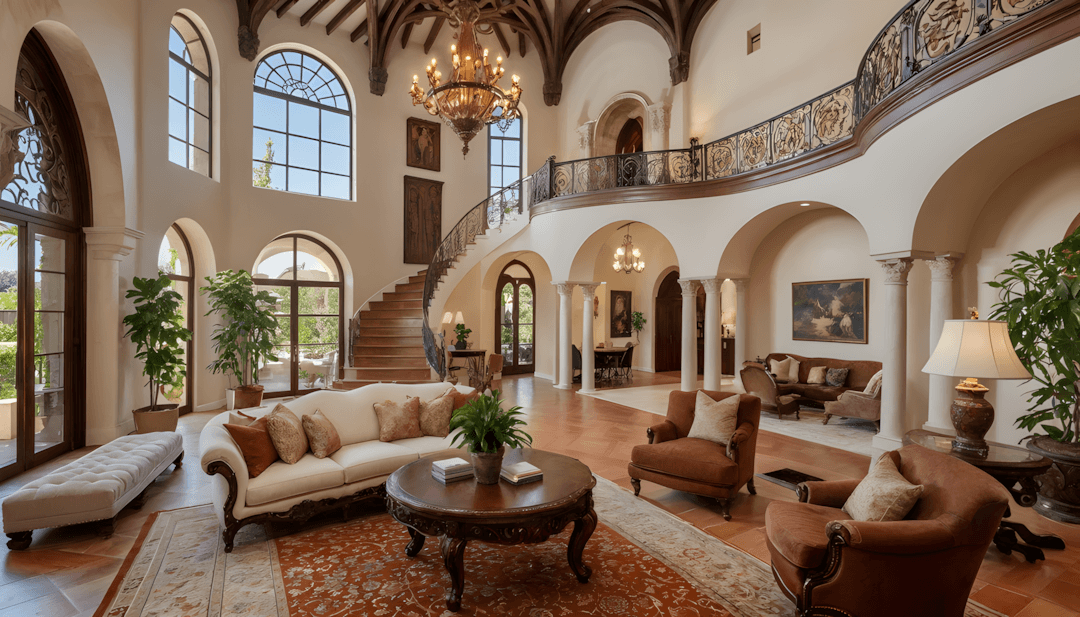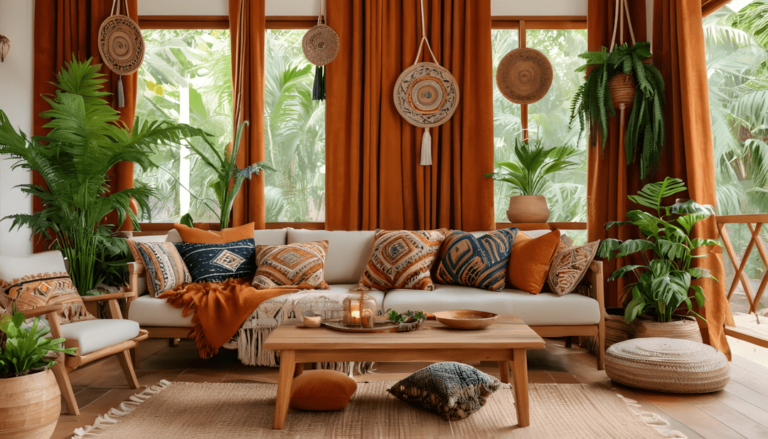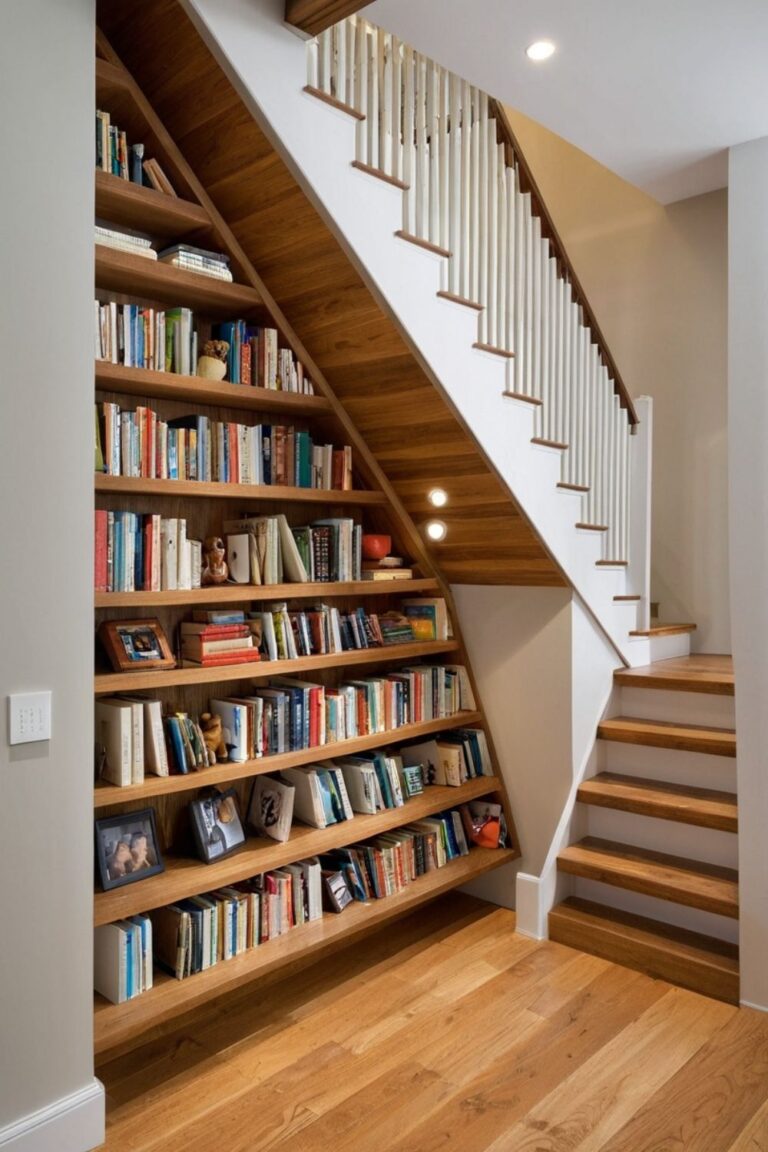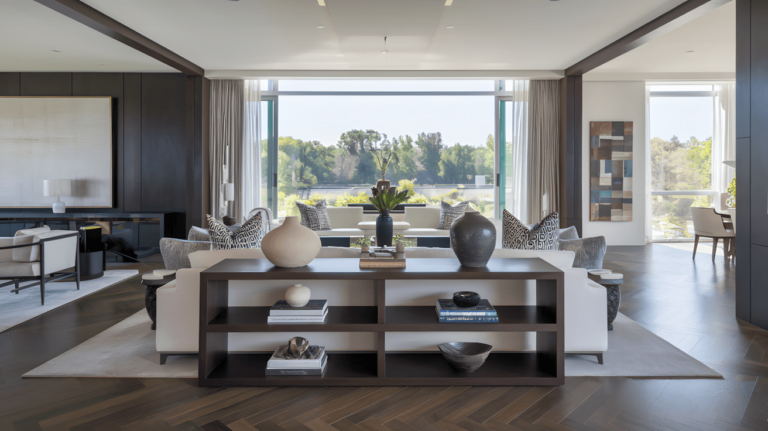In my experience working with homeowners on living room designs, I’ve observed that Spanish-style aesthetics often provide rich foundations for creating warm, sophisticated environments.
Through various projects, I’ve learned that this design approach typically combines architectural elements, natural materials, and warm color palettes to create spaces that feel both historically grounded and personally welcoming.
Note: For any structural modifications, electrical work, or installations mentioned in this article, always consult with licensed professionals to ensure safety and code compliance.
What makes Spanish-style living rooms particularly appealing is their emphasis on natural materials, handcrafted details, and connections between indoor and outdoor spaces. I’ve found that homeowners often choose this approach because it typically creates environments that feel both elegant and comfortable while incorporating elements that age beautifully over time.
The key to successful Spanish-style design often lies in balancing traditional elements with livability, incorporating authentic materials and craftsmanship while ensuring spaces work for contemporary family life.
Effective Spanish-inspired rooms typically feature natural textures, warm lighting, and architectural details that create character without overwhelming functionality.
Here are 25 Spanish-style living room approaches that often work well in different home environments, based on observations from various design projects.
1. Traditional Hacienda Foundation
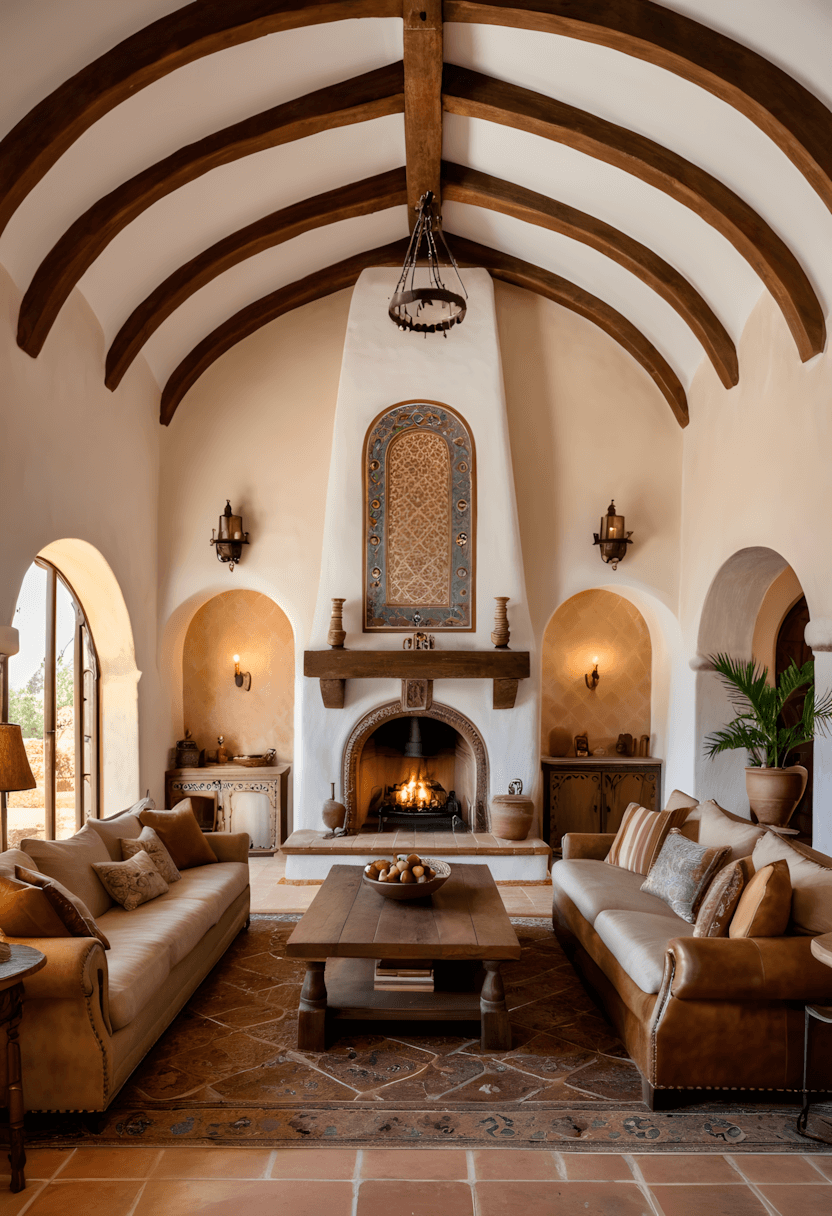
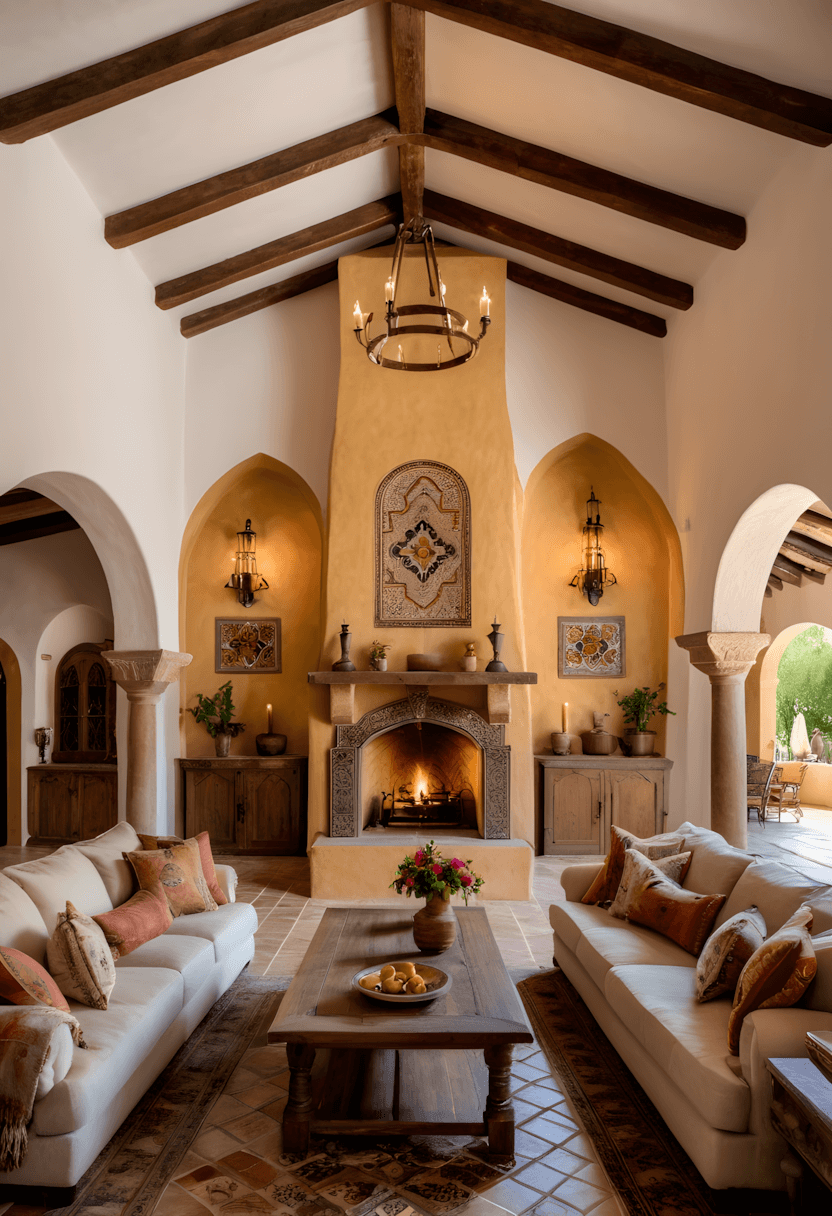
This classic approach often appeals to homeowners wanting authentic Spanish architectural elements. Thick stucco walls, exposed wooden beams, and central fireplaces typically create foundations that feel both substantial and welcoming.
Design consideration: Hand-painted tiles often add color and authenticity while providing durable surfaces that improve with age.
Architectural benefit: Vaulted ceilings with exposed beams often create impressive scale while maintaining intimate, cozy atmospheres.
2. Mediterranean Light Integration
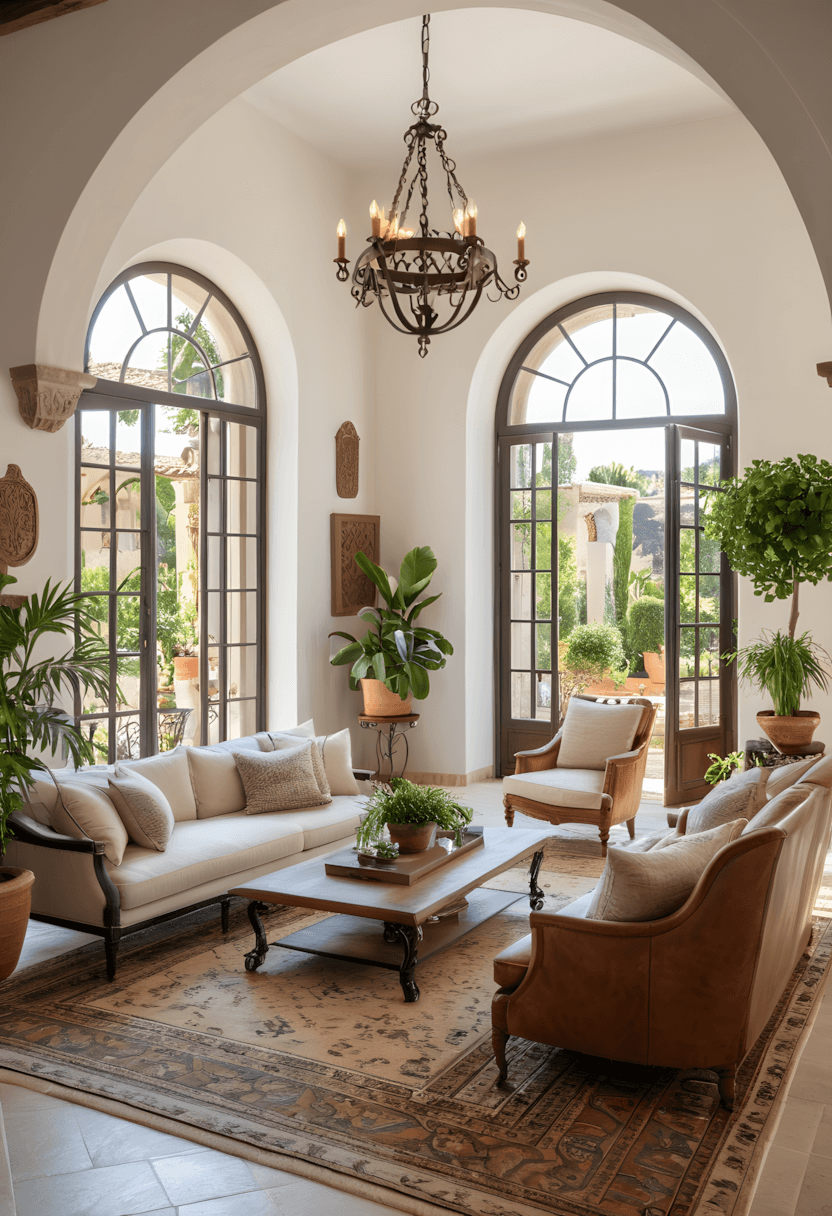
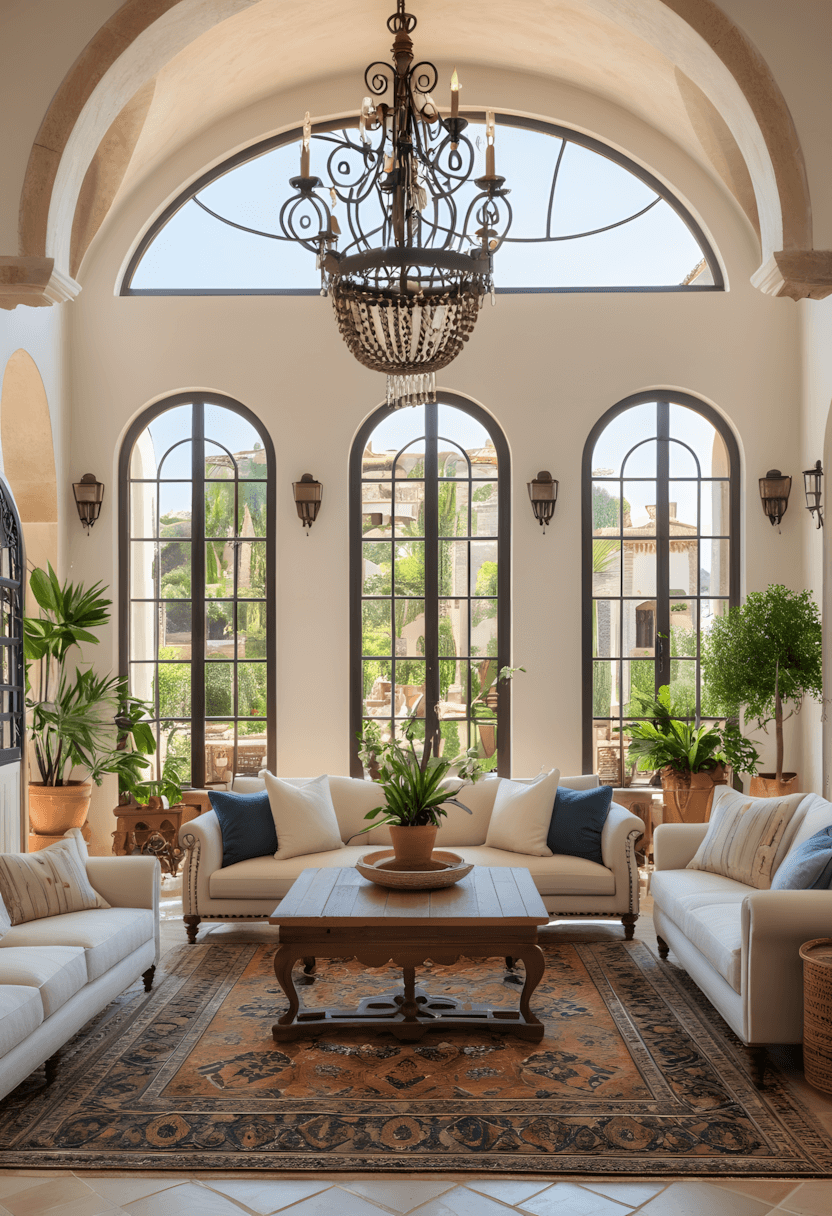
This bright approach often works well for homeowners appreciating natural light and airy environments. Large arched windows typically flood spaces with sunlight while maintaining traditional Spanish architectural character.
Lighting strategy: Wrought-iron fixtures often complement natural light while providing authentic period details and warm evening illumination.
Material harmony: Traditional rugs and textiles often ground bright spaces while adding necessary warmth and texture.
3. Rustic Comfort Focus
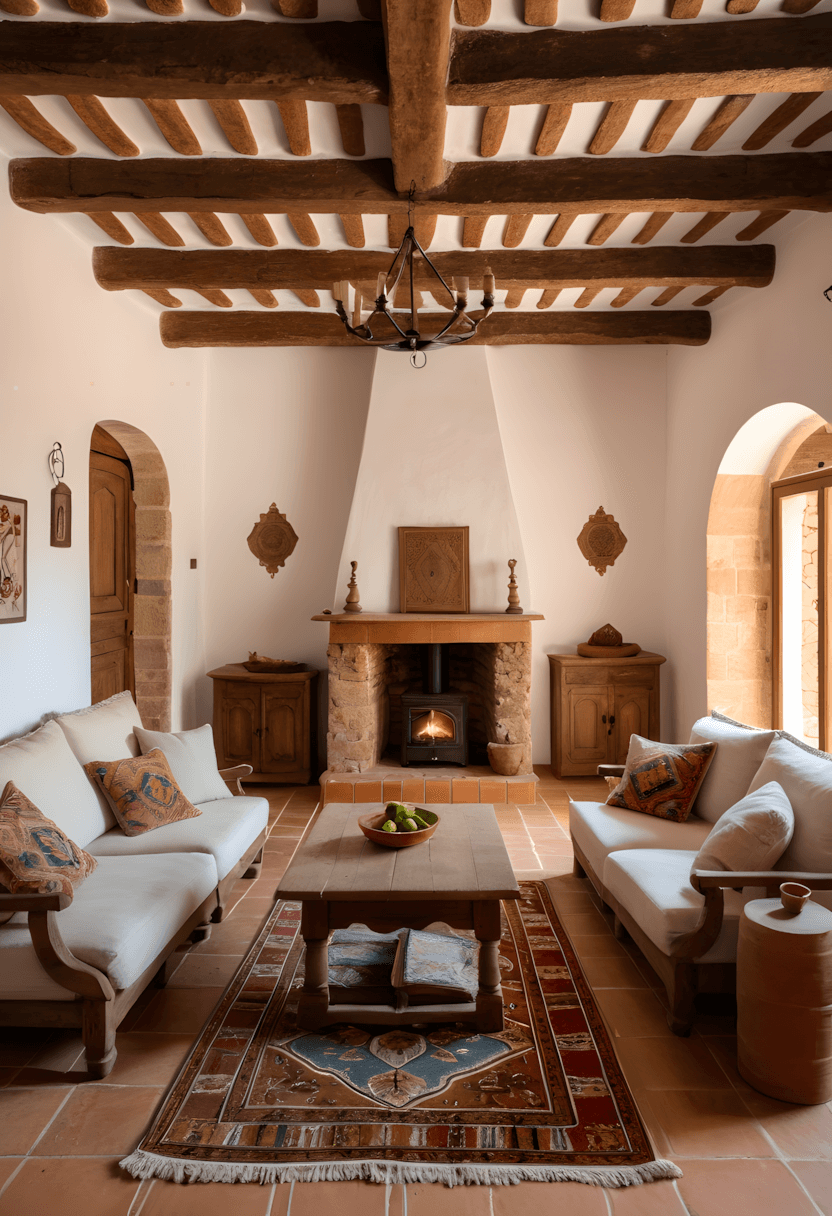
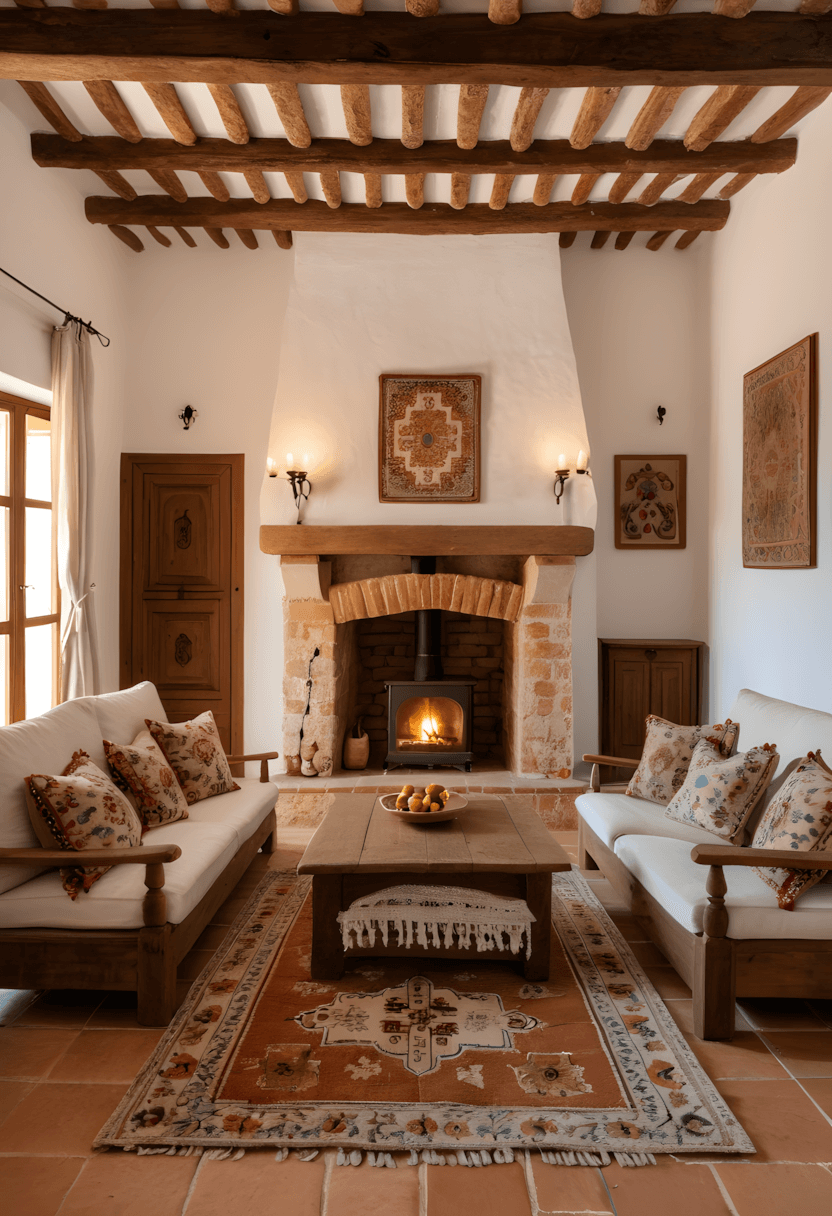
This cozy approach often appeals to homeowners wanting comfortable, lived-in environments. Rustic wooden furniture typically provides sturdy foundations while embroidered textiles add softness and cultural authenticity.
Design balance: Combining substantial wood pieces with soft textiles often creates environments that feel both durable and welcoming.
Flooring consideration: Terracotta tiles often provide practical, beautiful foundations that complement the rustic aesthetic while remaining easy to maintain.
4. Indoor-Outdoor Connection
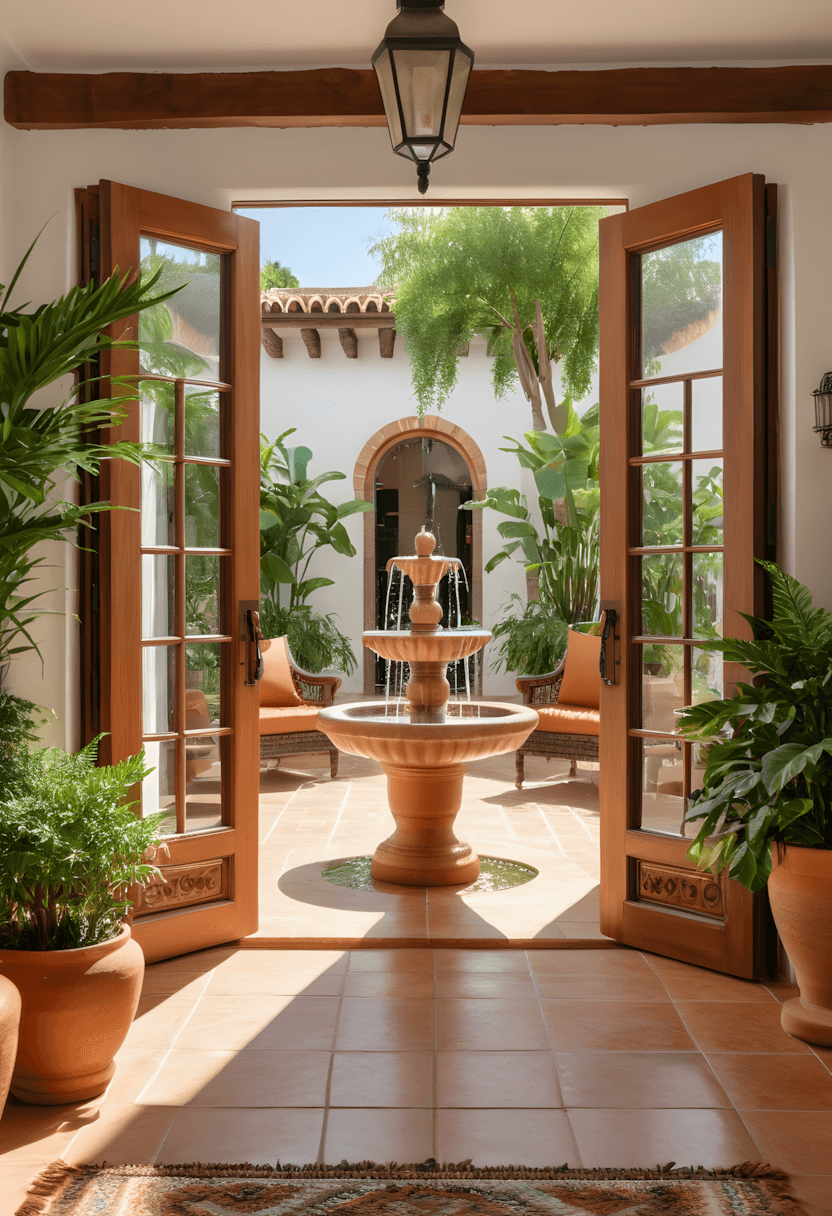
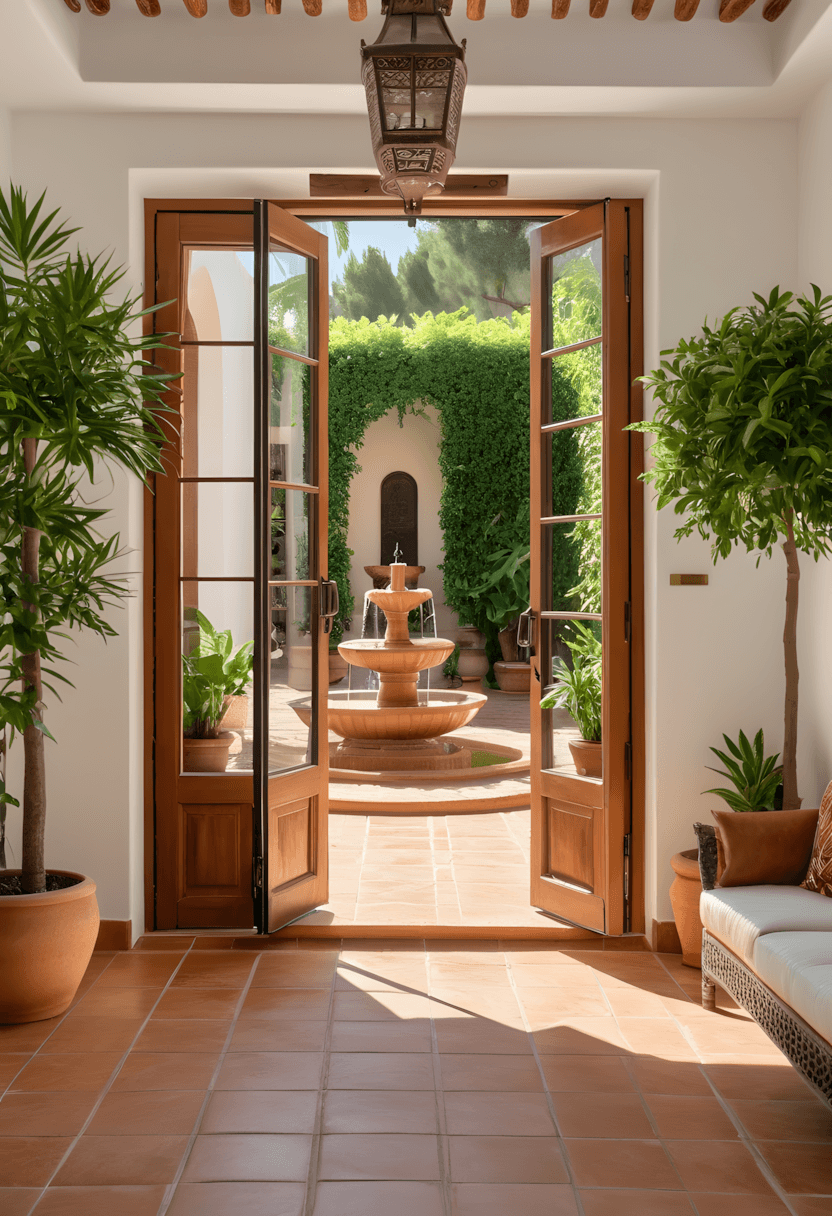
This integrated approach often works well for homeowners with suitable outdoor spaces. Designs that blur boundaries between interior and exterior typically create expansive, naturally ventilated environments.
Design principle: Consistent materials and color palettes often help interior and exterior spaces feel connected rather than separate.
Practical benefit: This approach often extends living space while taking advantage of favorable climate conditions.
5. Luxurious Textile Integration
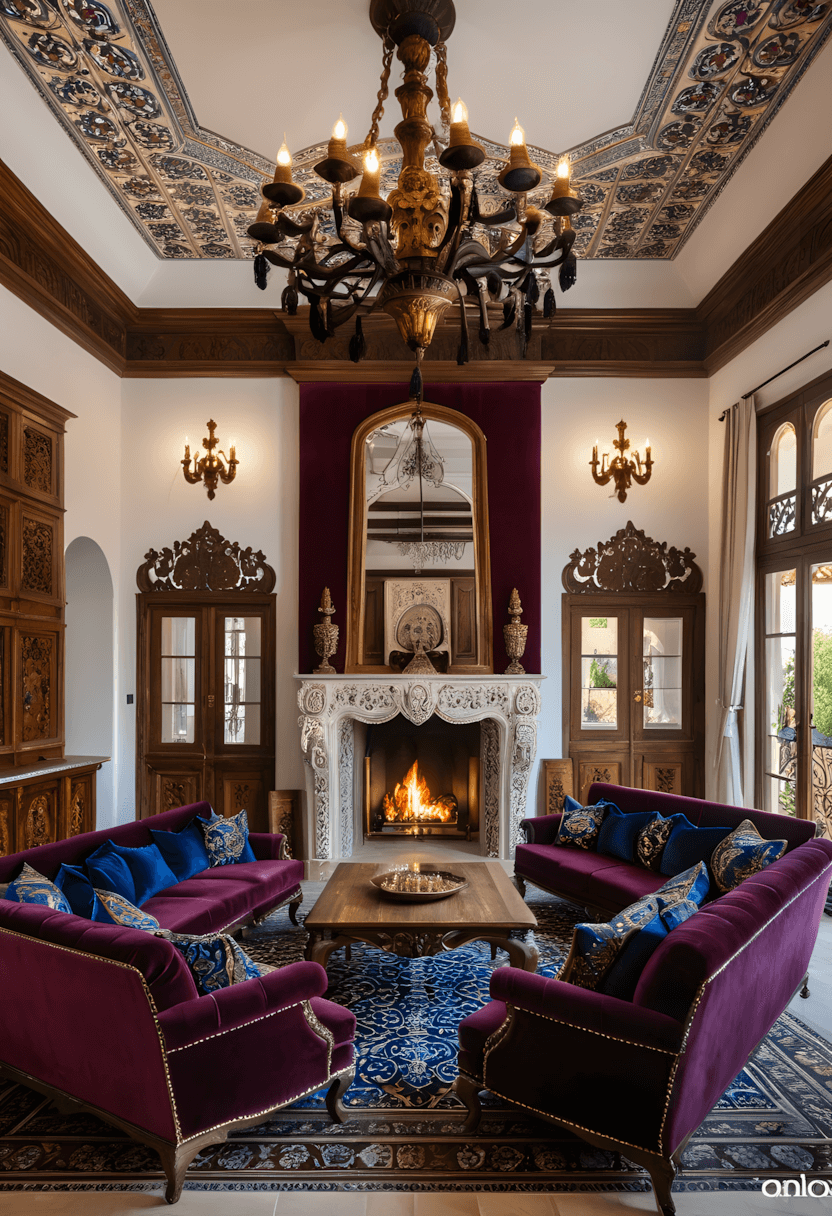
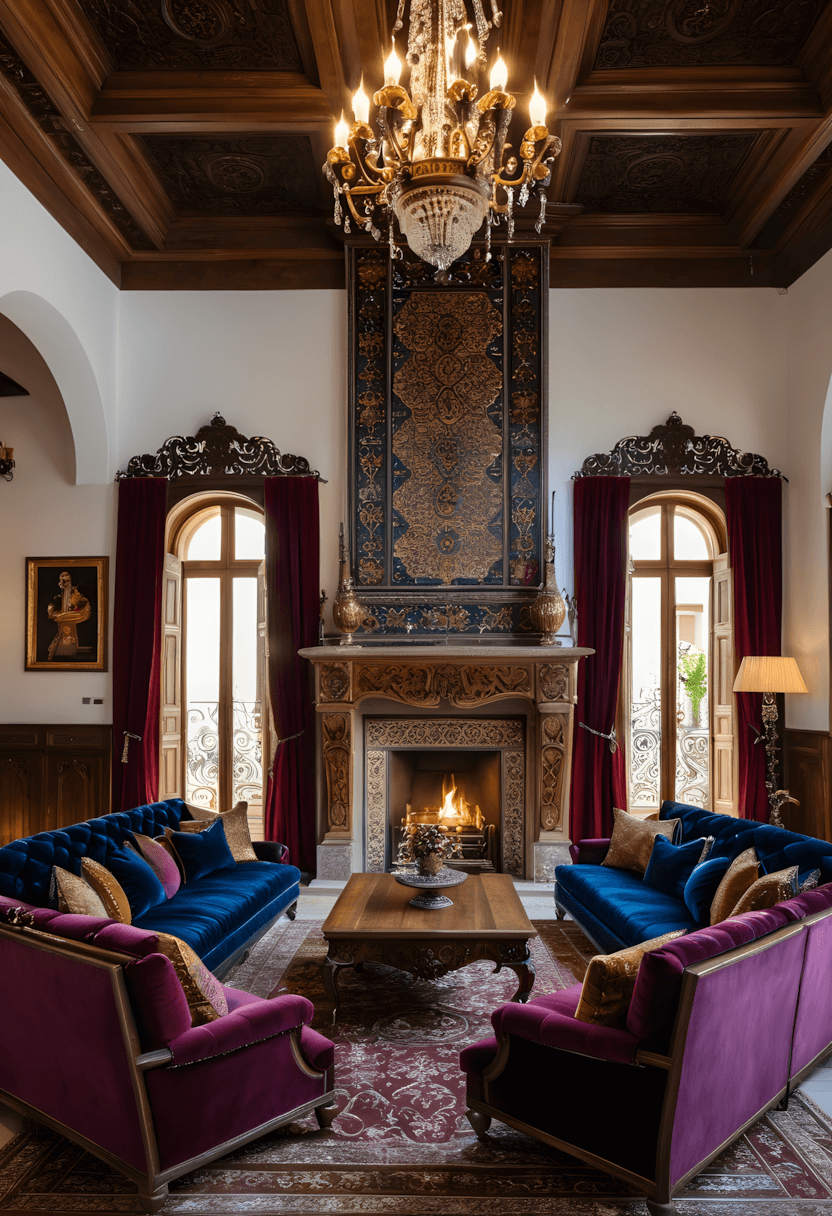
This opulent approach often appeals to homeowners wanting sophisticated, rich environments. Velvet upholstery in jewel tones typically adds luxury while maintaining Spanish design authenticity.
Design balance: Combining rich textiles with rustic architectural elements often creates sophisticated contrast without losing cultural character.
Color strategy: Deep, saturated colors often work well against neutral architectural backgrounds while maintaining visual harmony.
6. Simplified Spanish Elegance
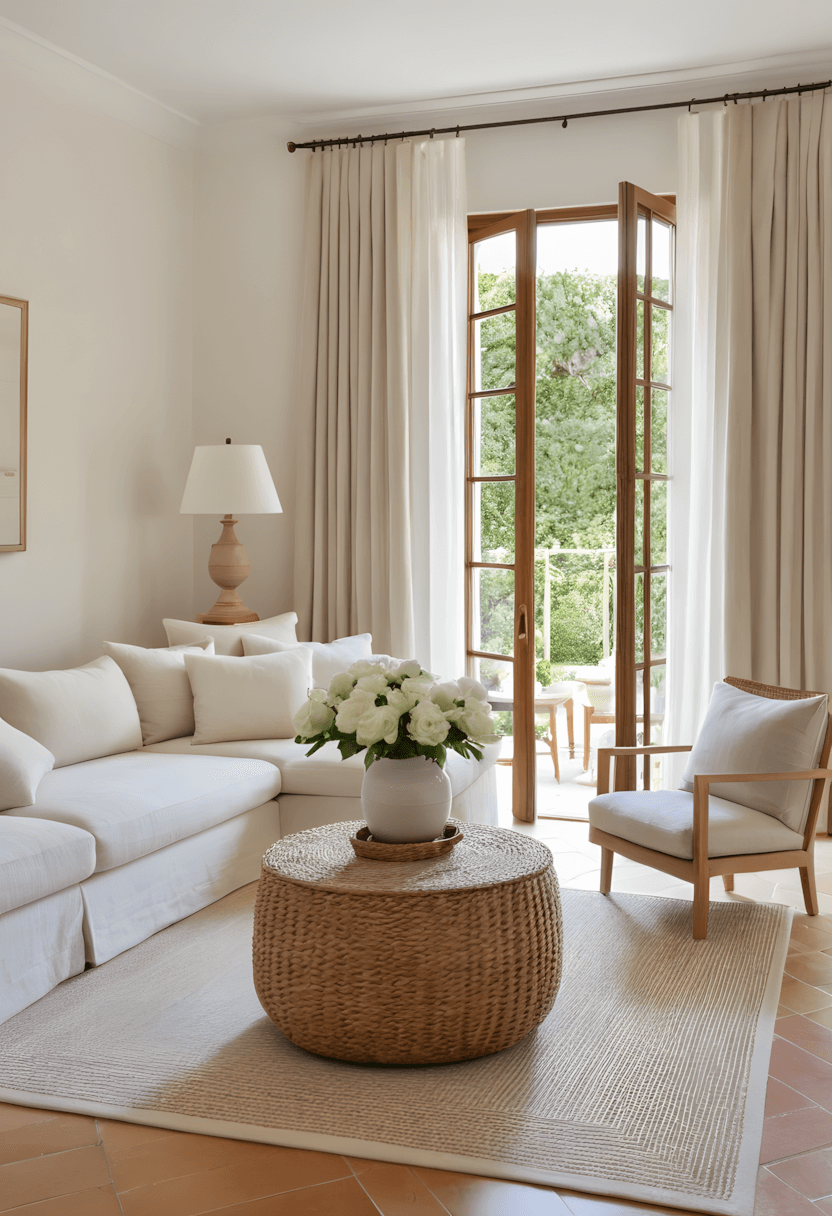
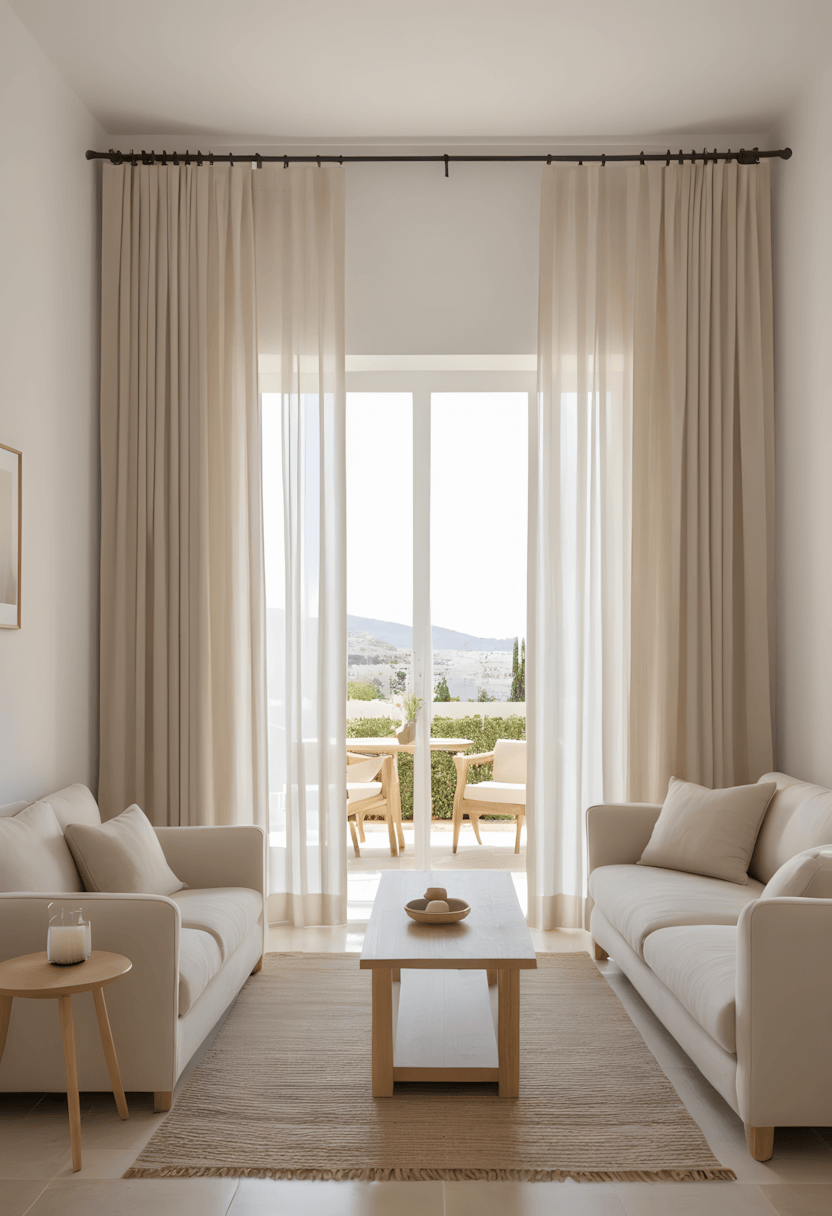
This refined approach often works well for homeowners preferring understated sophistication. Clean lines and natural textures typically create serene environments while maintaining Spanish design principles.
Design philosophy: Sometimes restraint allows architectural beauty to take prominence without competing decorative elements.
Color palette: Neutral tones often create calm foundations while allowing natural materials and textures to provide visual interest.
7. Spanish Colonial Character
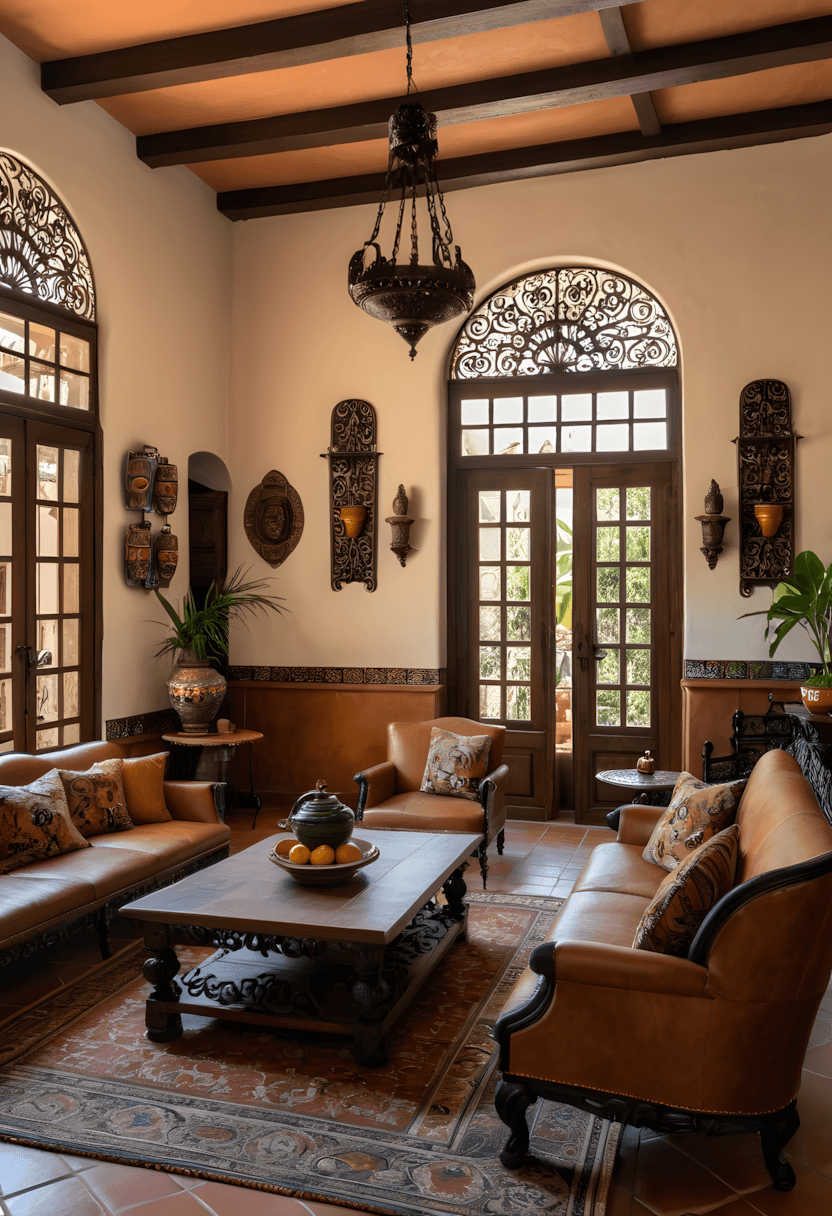
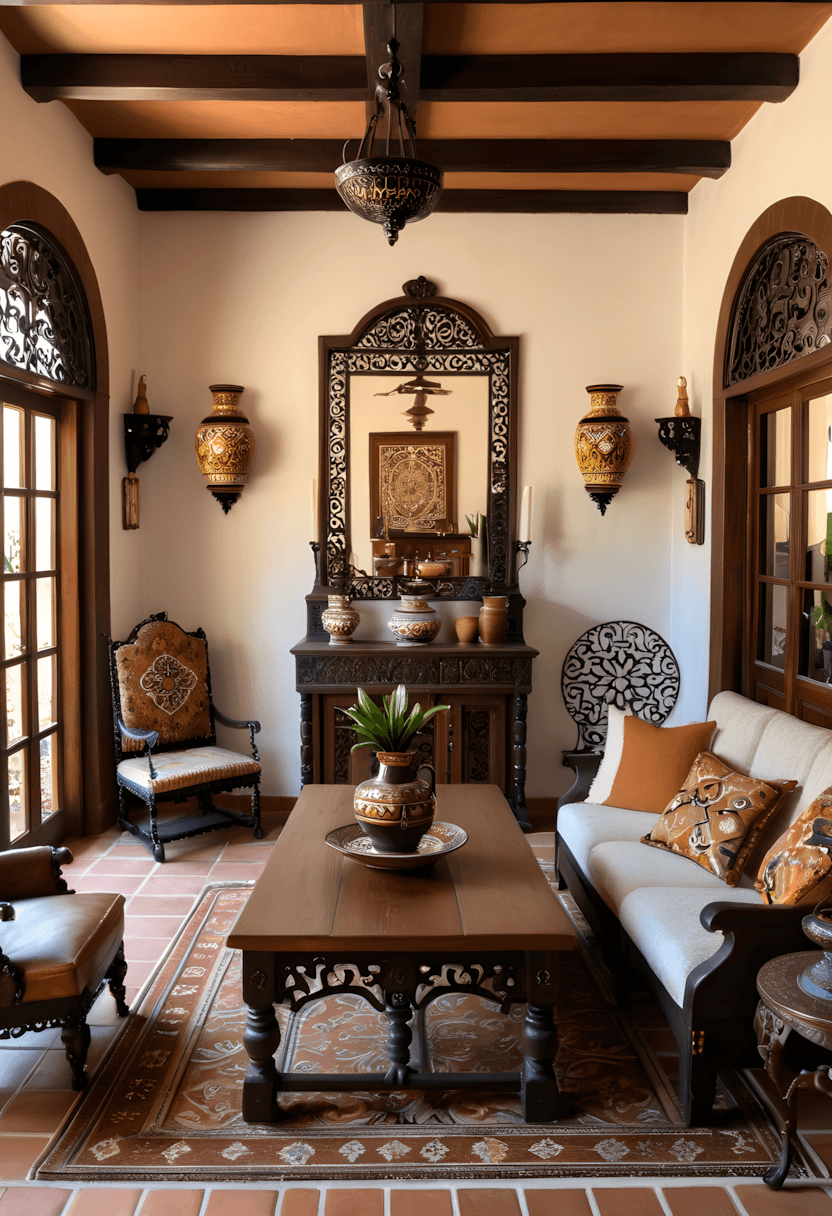
This historical approach often appeals to homeowners appreciating traditional craftsmanship and period authenticity. Dark, intricate woodwork typically contrasts beautifully with light walls and carefully selected pottery.
Design principle: Contrasting dark and light elements often create visual interest while maintaining historical accuracy.
Accent strategy: Traditional pottery and textiles often provide authentic color and pattern without overwhelming the space.
8. Bold Artistic Expression
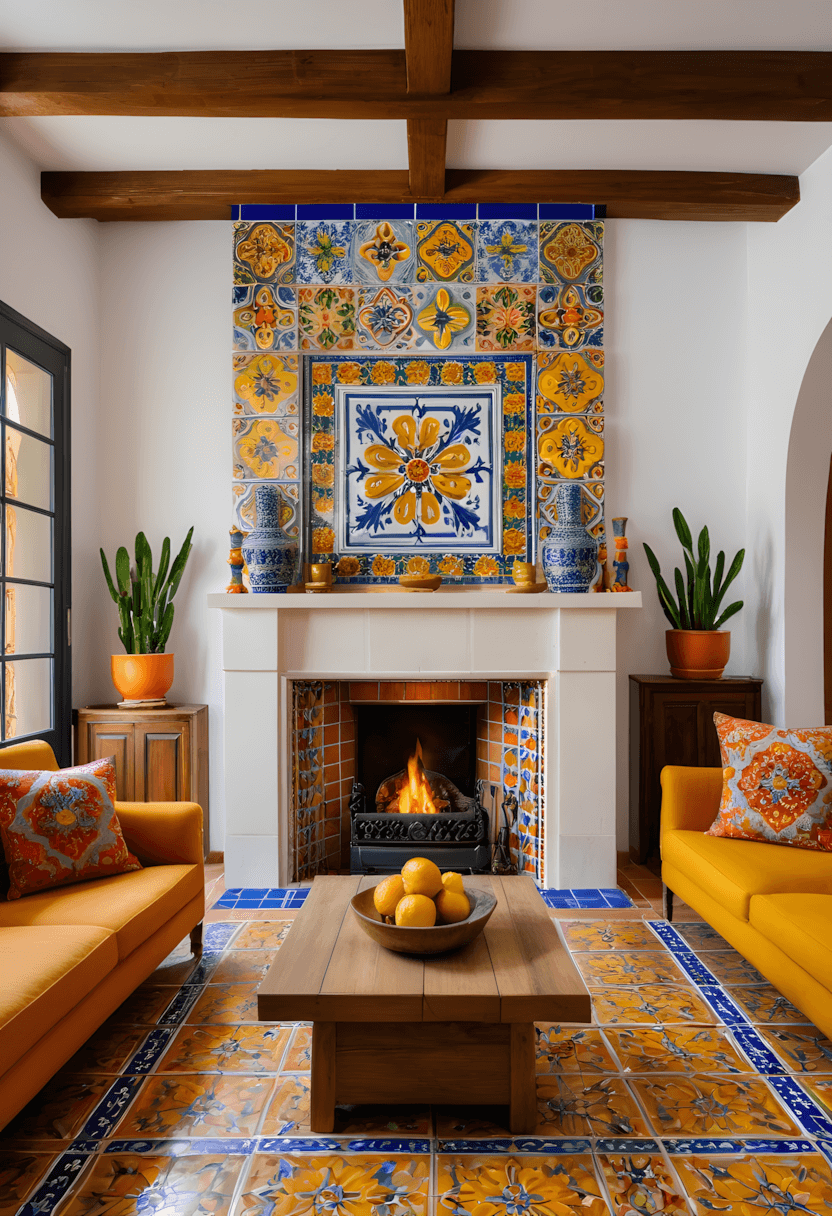
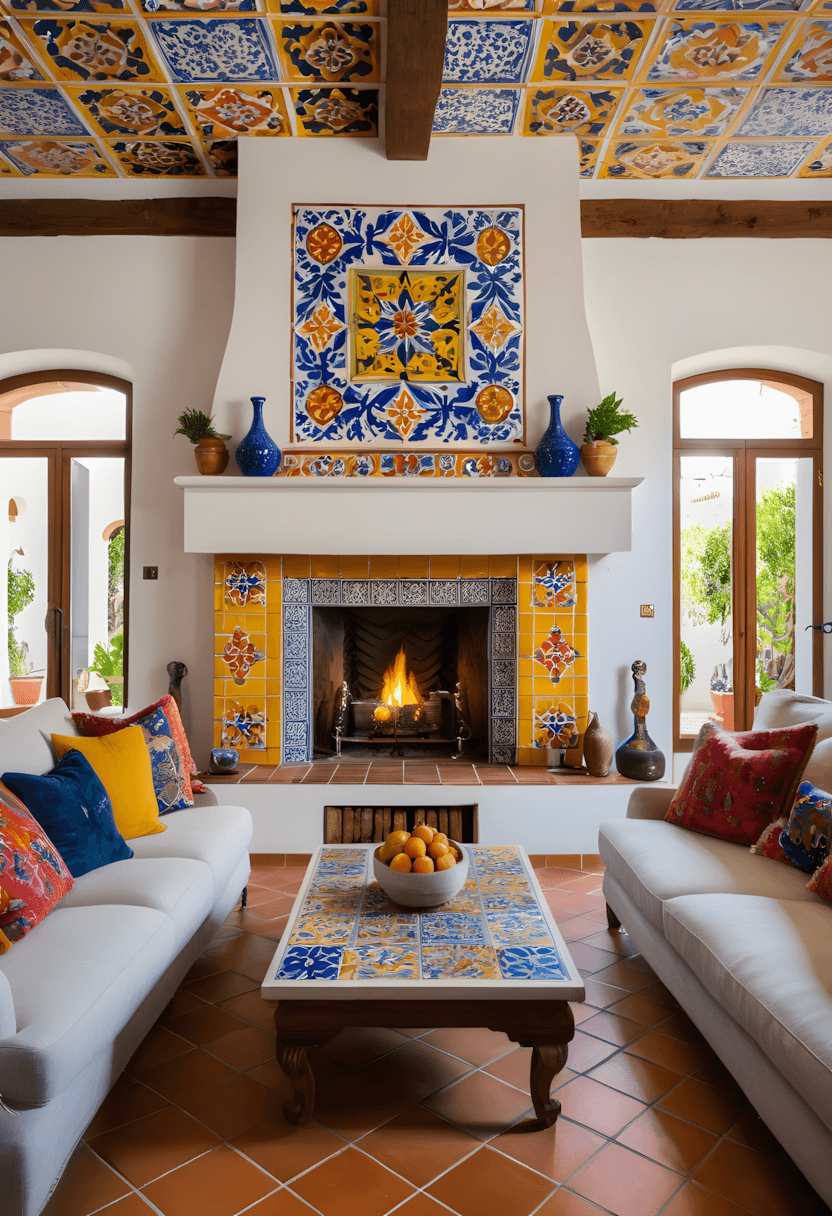
This vibrant approach often works well for homeowners wanting dramatic, culturally rich environments. Hand-painted tiles and bright colors typically create dynamic focal points while maintaining Spanish design traditions.
Design consideration: Bold colors often work best when balanced with neutral elements to prevent overwhelming the space.
Cultural authenticity: Traditional tile patterns and painting techniques often provide genuine Spanish character rather than imitation.
9. Farmhouse Simplicity
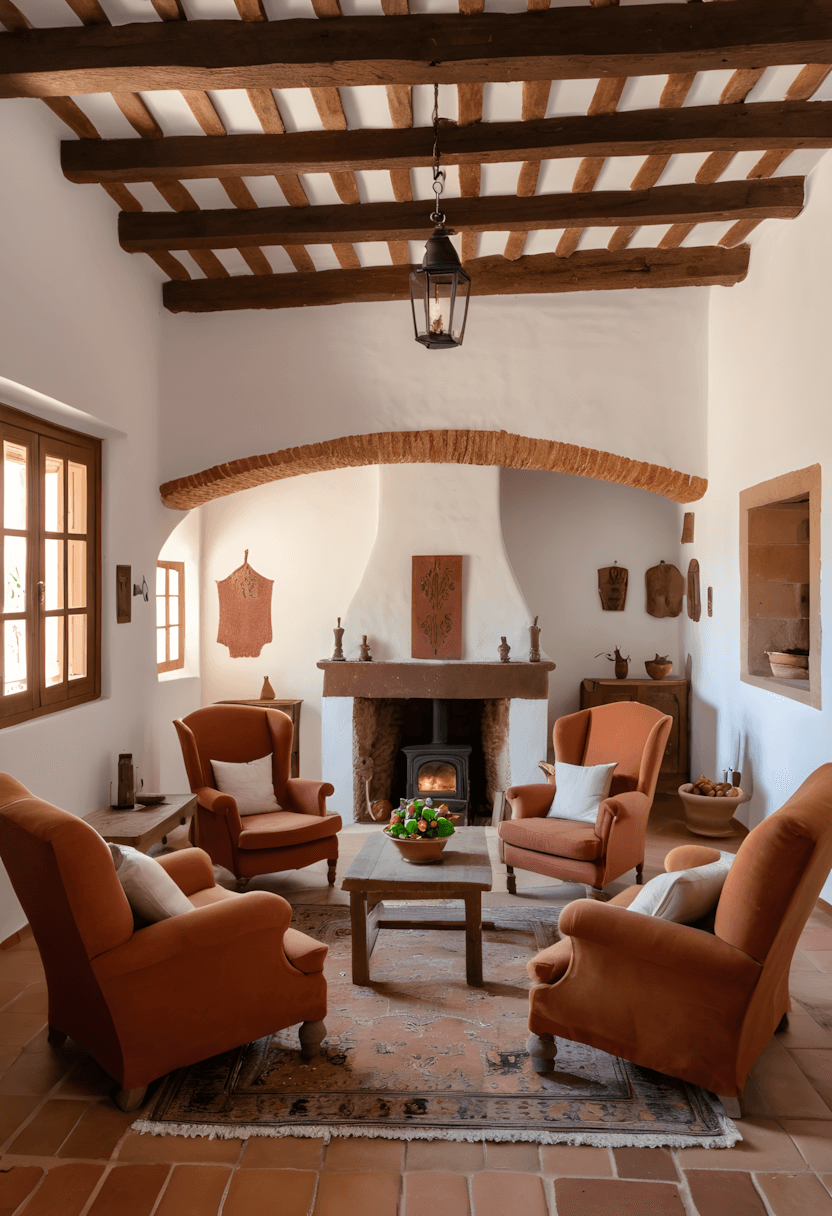
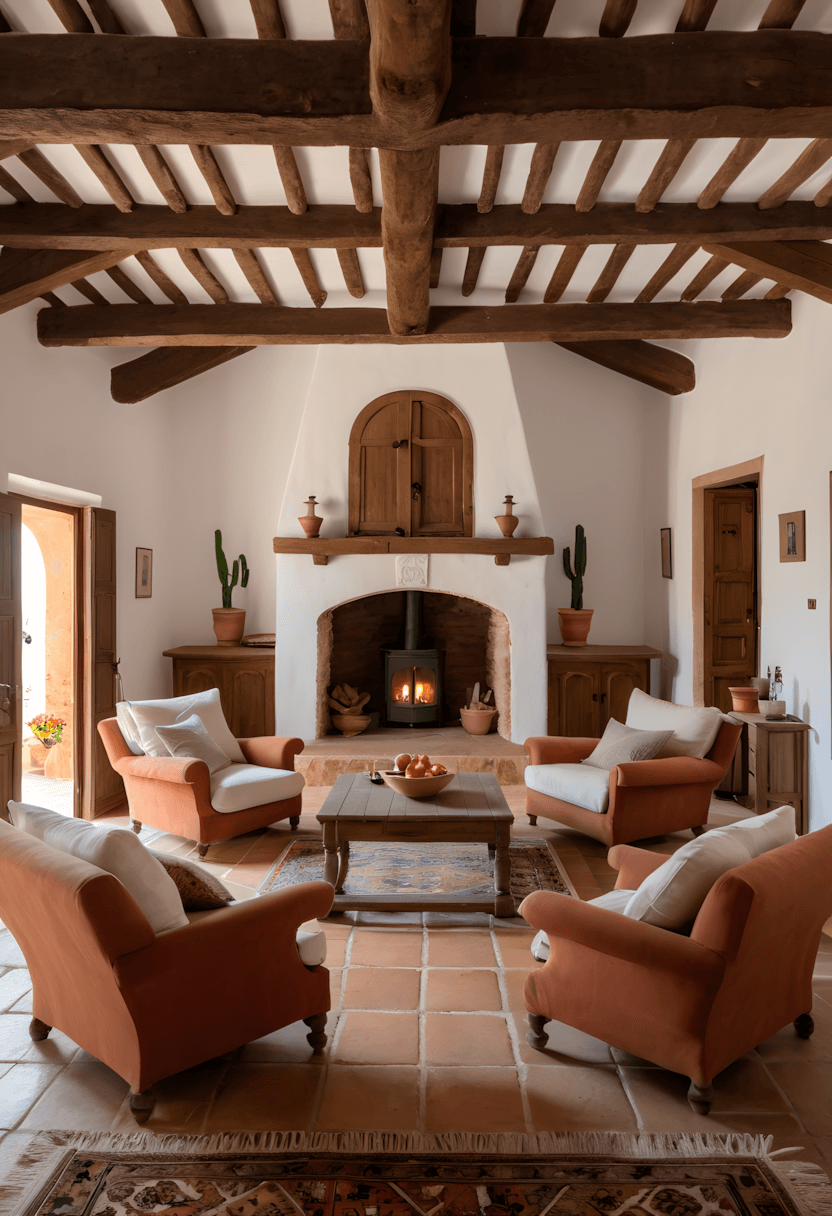
This rustic approach often appeals to homeowners wanting comfortable, unpretentious environments. Heavy wooden furniture typically provides substantial foundations while handcrafted accessories add personal character.
Design benefit: This approach often creates environments that improve with age and use rather than requiring perfect maintenance.
Material selection: Natural, weathered materials often provide authentic farmhouse character while remaining functional for daily life.
10. Traditional-Contemporary Balance
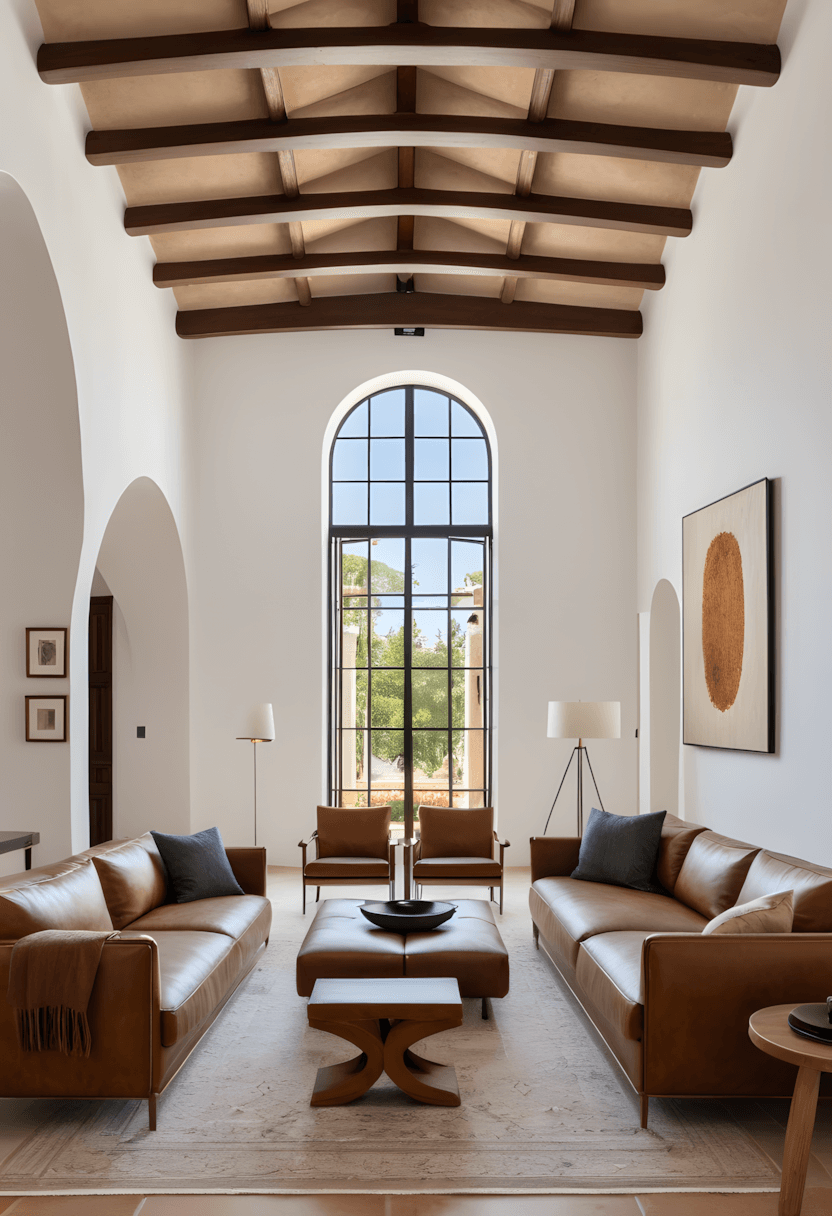
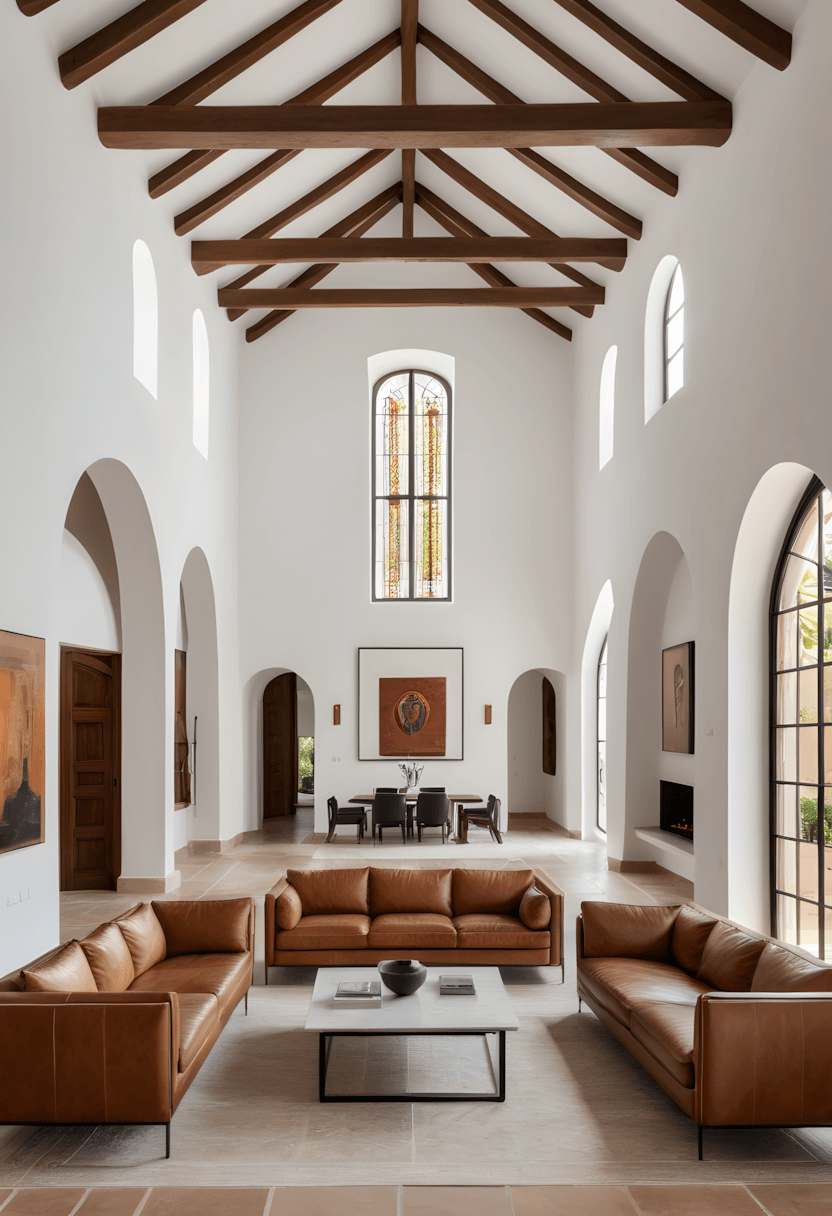
This hybrid approach often works well for homeowners wanting period character with modern functionality. Traditional architectural elements typically provide historical character while contemporary furniture adds current comfort and style.
Design integration: Successful blending often requires careful attention to scale and proportion to ensure elements work harmoniously together.
Practical benefit: This approach often provides the best aspects of both traditional charm and contemporary livability.
11. Romantic Sophistication
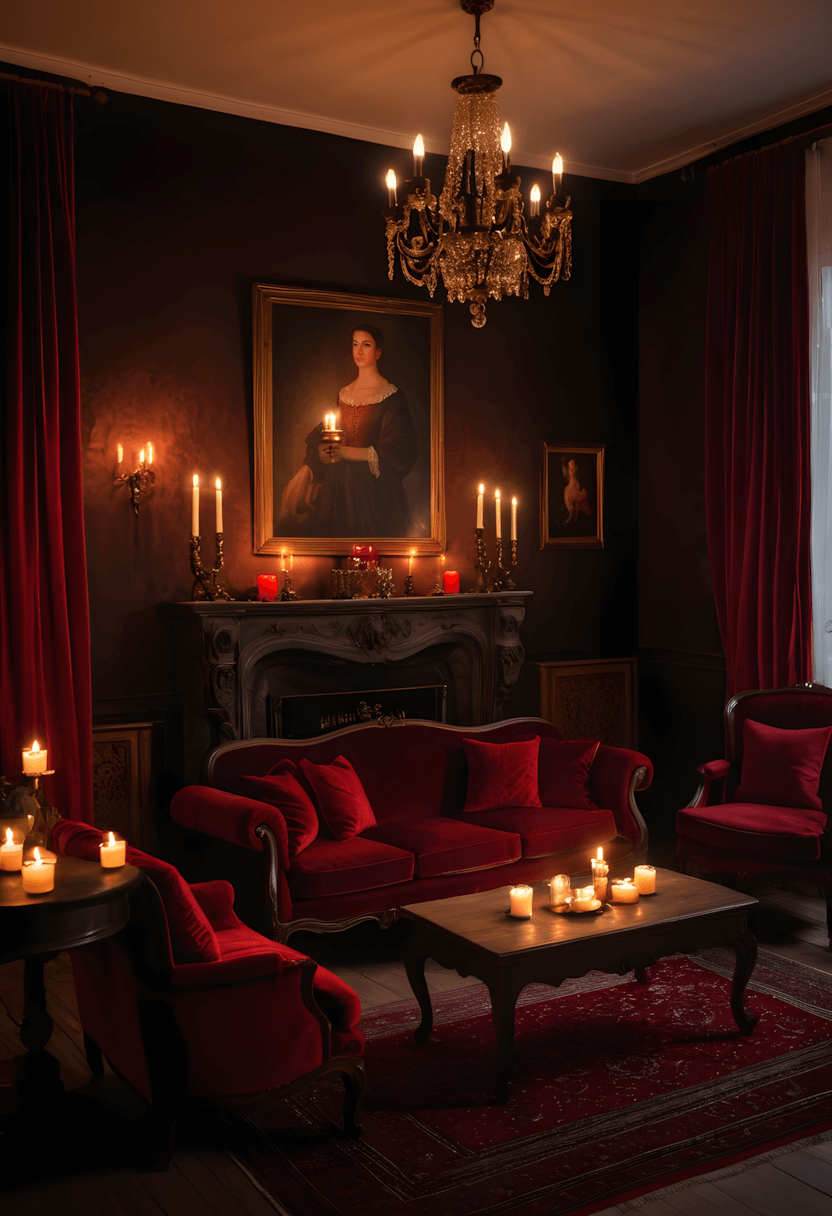
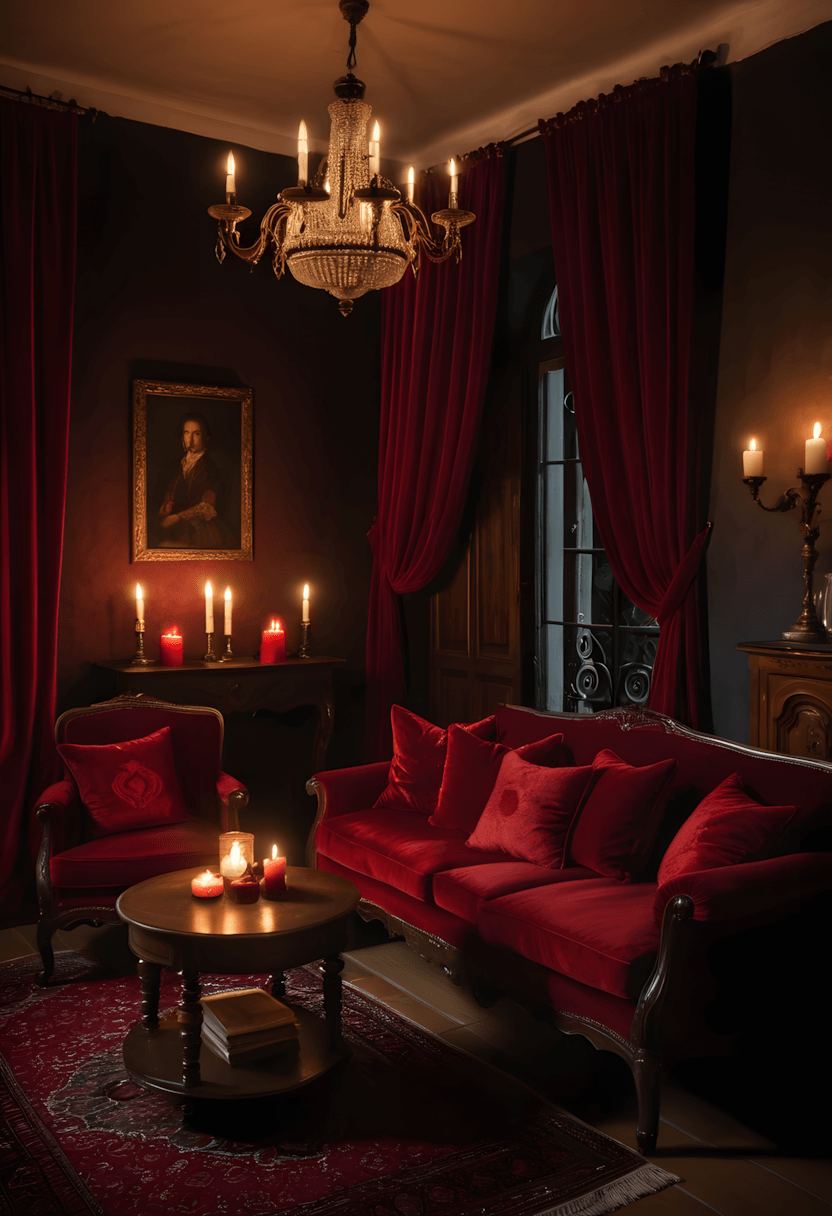
This intimate approach often appeals to homeowners wanting elegant, cozy environments. Rich textiles and dramatic window treatments typically create sophisticated atmospheres that feel both formal and welcoming.
Design consideration: Layered textiles often add luxury and comfort while maintaining the warm, intimate character Spanish design encourages.
Color strategy: Deep, rich colors often create romantic atmospheres while complementing traditional Spanish architectural elements.
12. Desert-Inspired Warmth
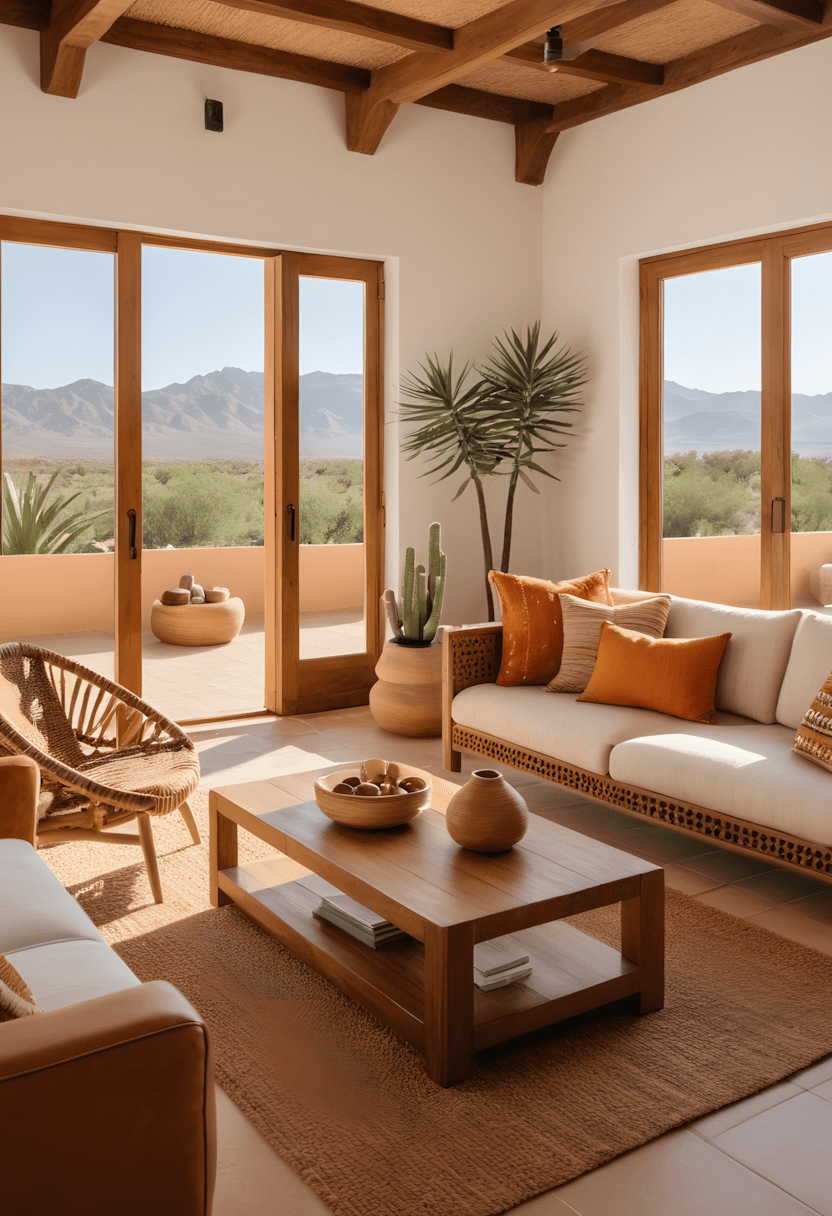
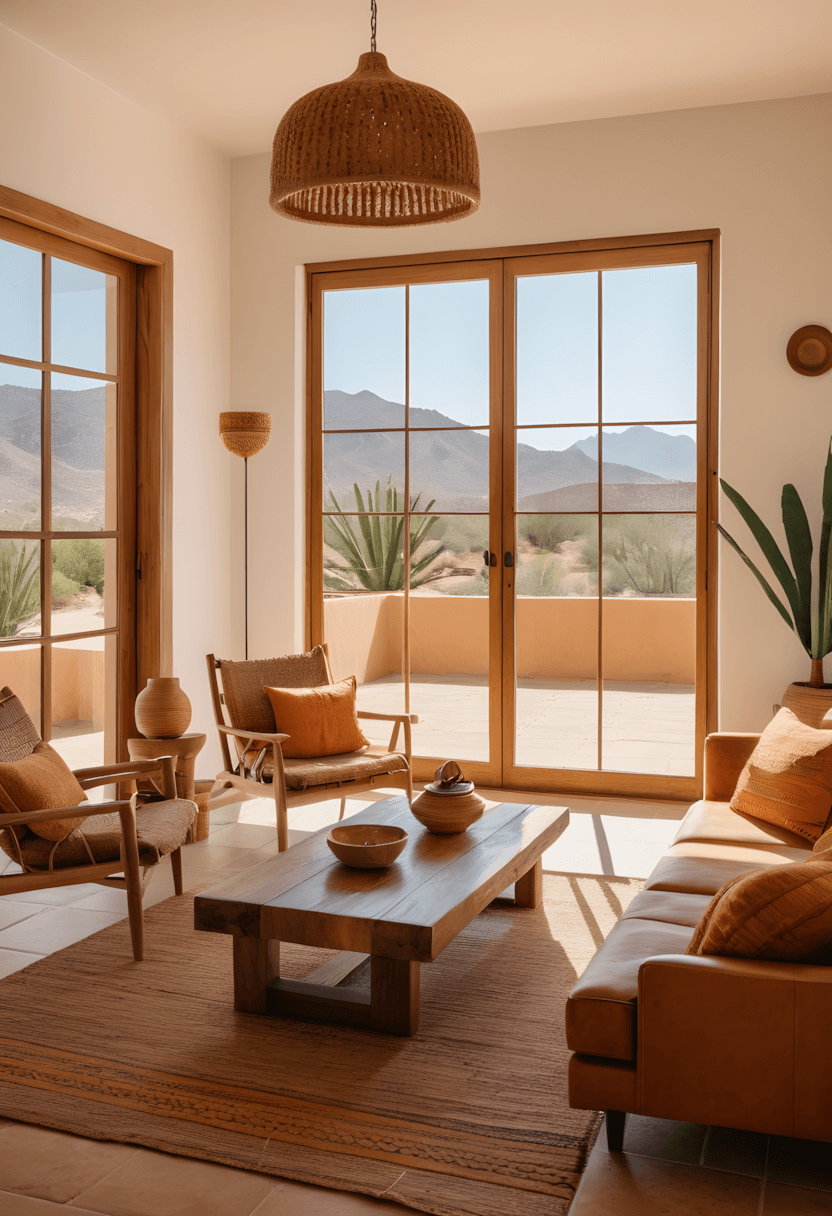
This earthy approach often works well for homeowners in arid climates or those appreciating desert aesthetics. Warm earth tones typically create tranquil environments that feel connected to natural landscapes.
Color harmony: Desert-inspired palettes often work naturally with Spanish architectural elements while creating serene, grounded atmospheres.
Material compatibility: Natural wood and woven materials often complement desert color schemes while maintaining Spanish design authenticity.
13. Mediterranean Coastal Influence
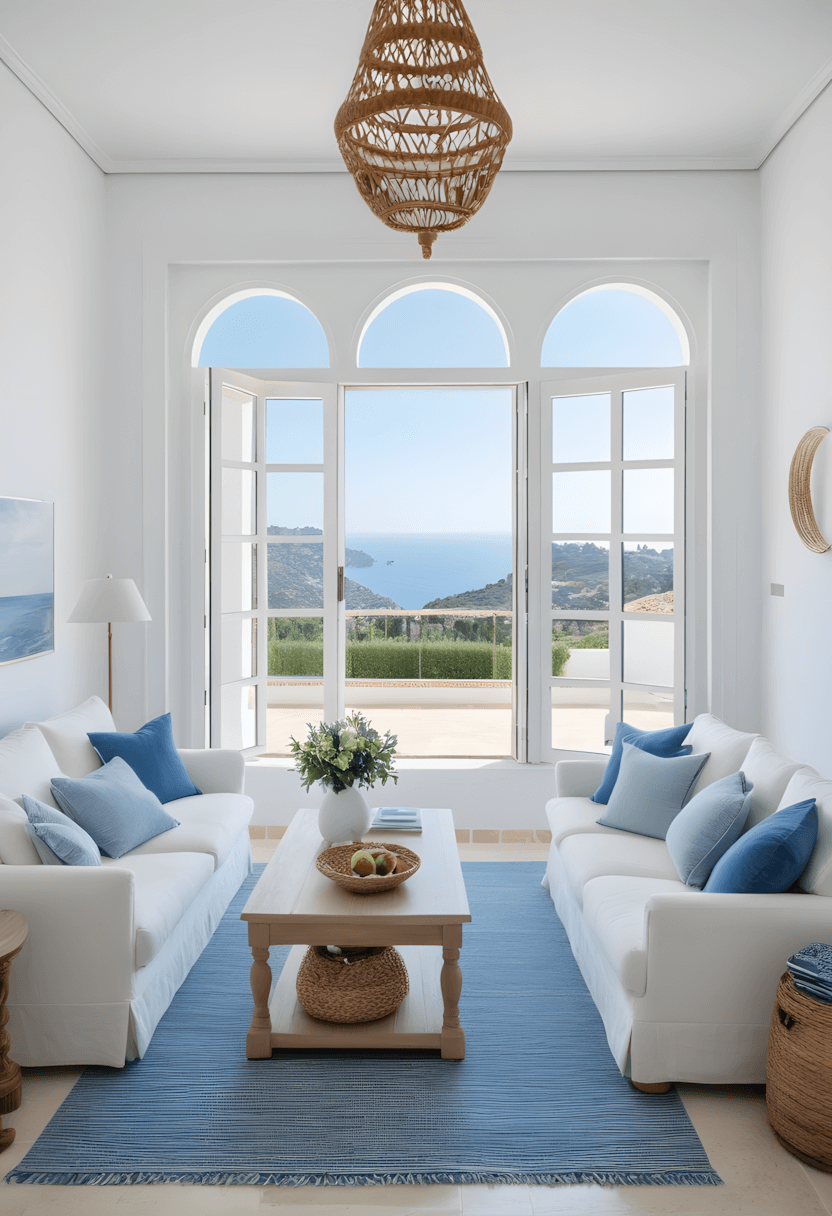
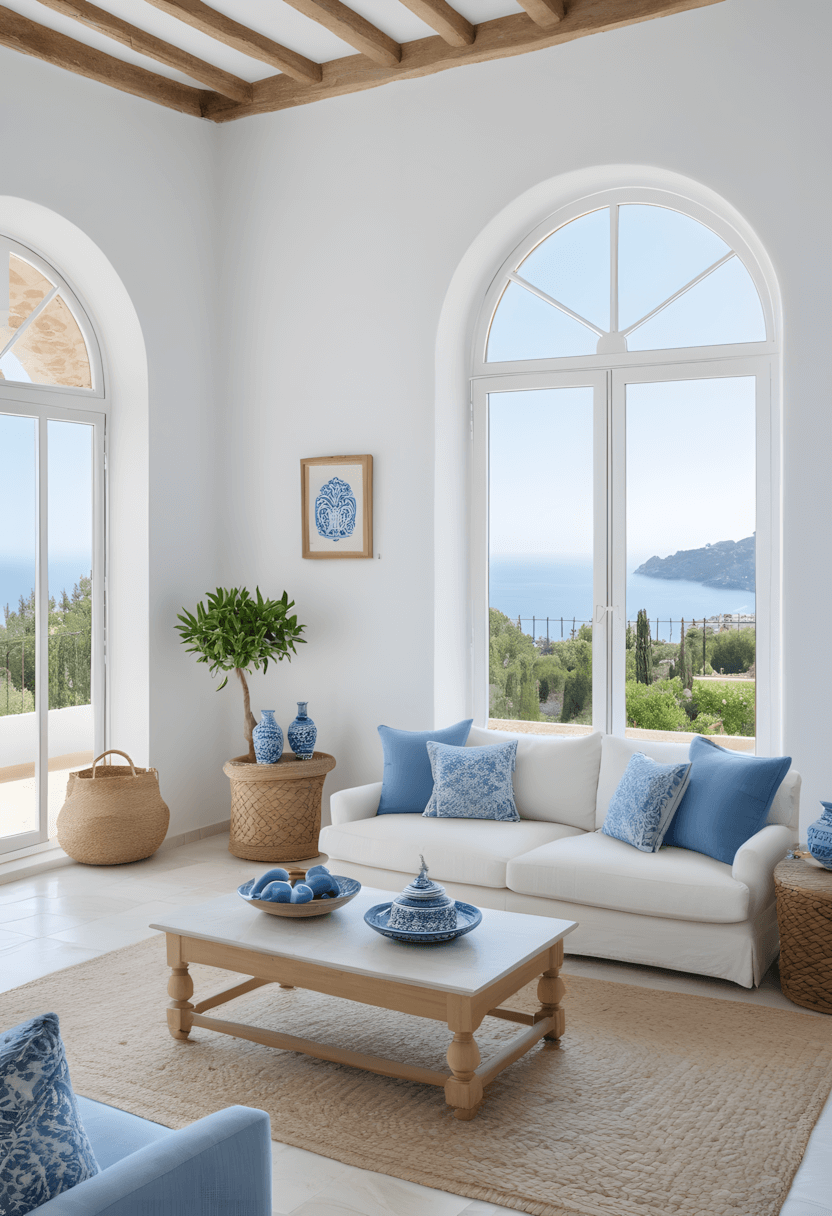
This breezy approach often appeals to homeowners wanting light, refreshing environments. Cool blues and whites typically create seaside-inspired spaces while maintaining Spanish architectural foundations.
Design benefit: This approach often makes spaces feel larger and more open while providing visual relief in warmer climates.
Natural light: Large windows and light colors often maximize natural illumination while creating connections to outdoor environments.
14. Gothic Spanish Details
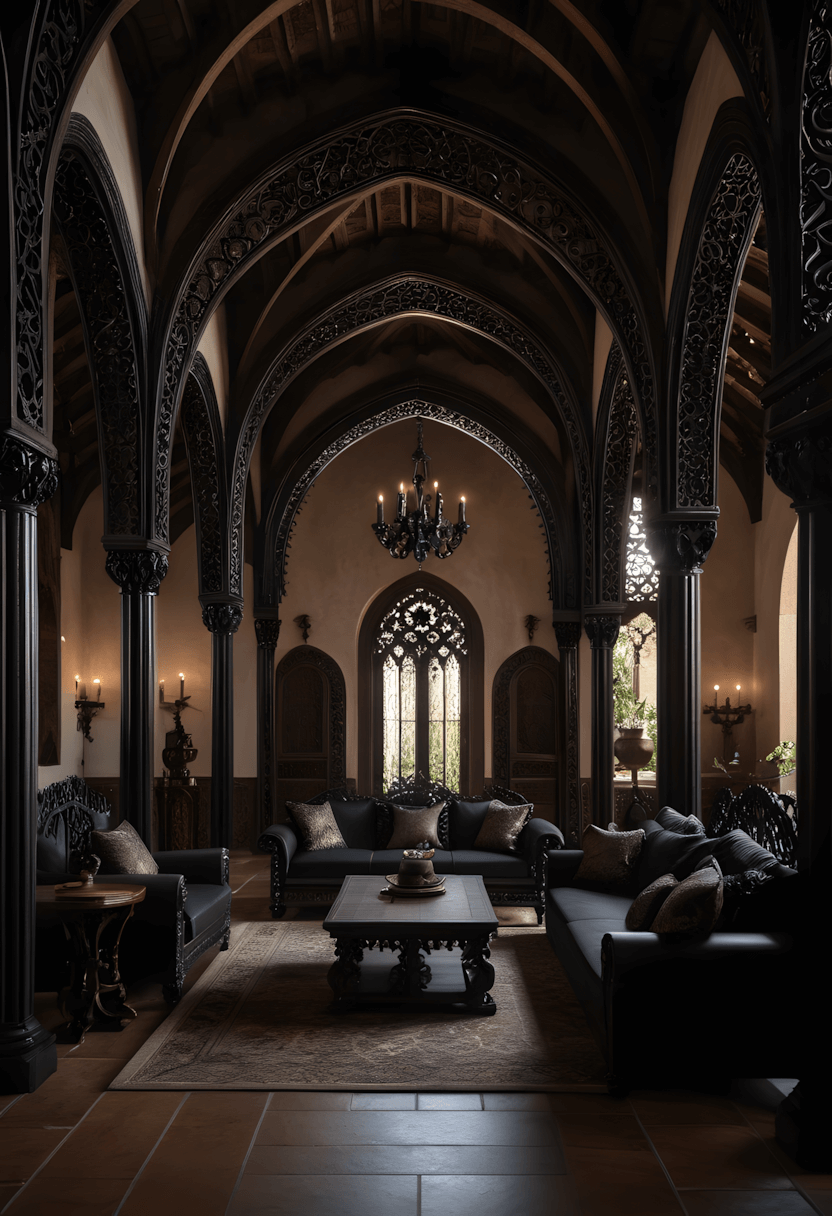
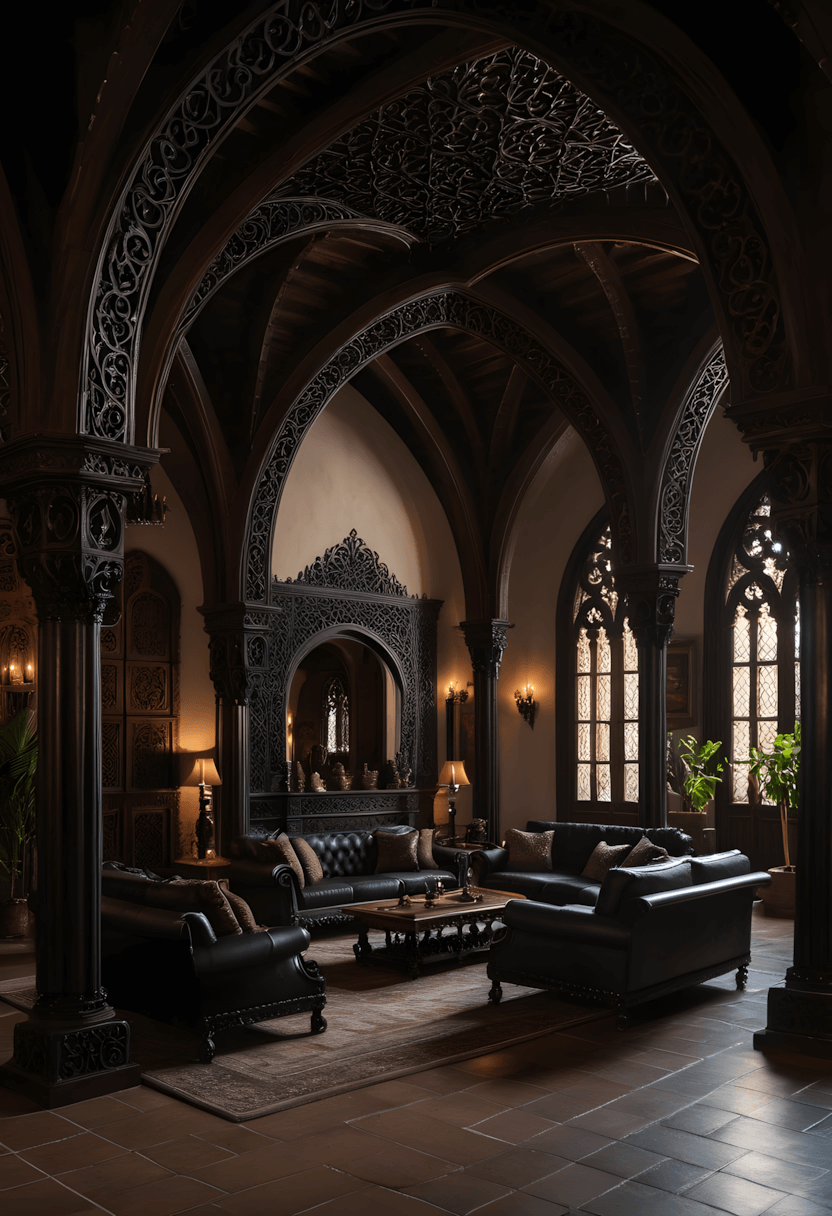
This dramatic approach often works well for homeowners appreciating ornate architectural elements. Gothic arches and intricate ironwork typically create distinctive, historically rich environments.
Design impact: Architectural details often become major focal points that provide character without requiring extensive decoration.
Material contrast: Combining warm wood with cool stone often creates sophisticated contrast while maintaining historical accuracy.
15. Bohemian Spanish Fusion
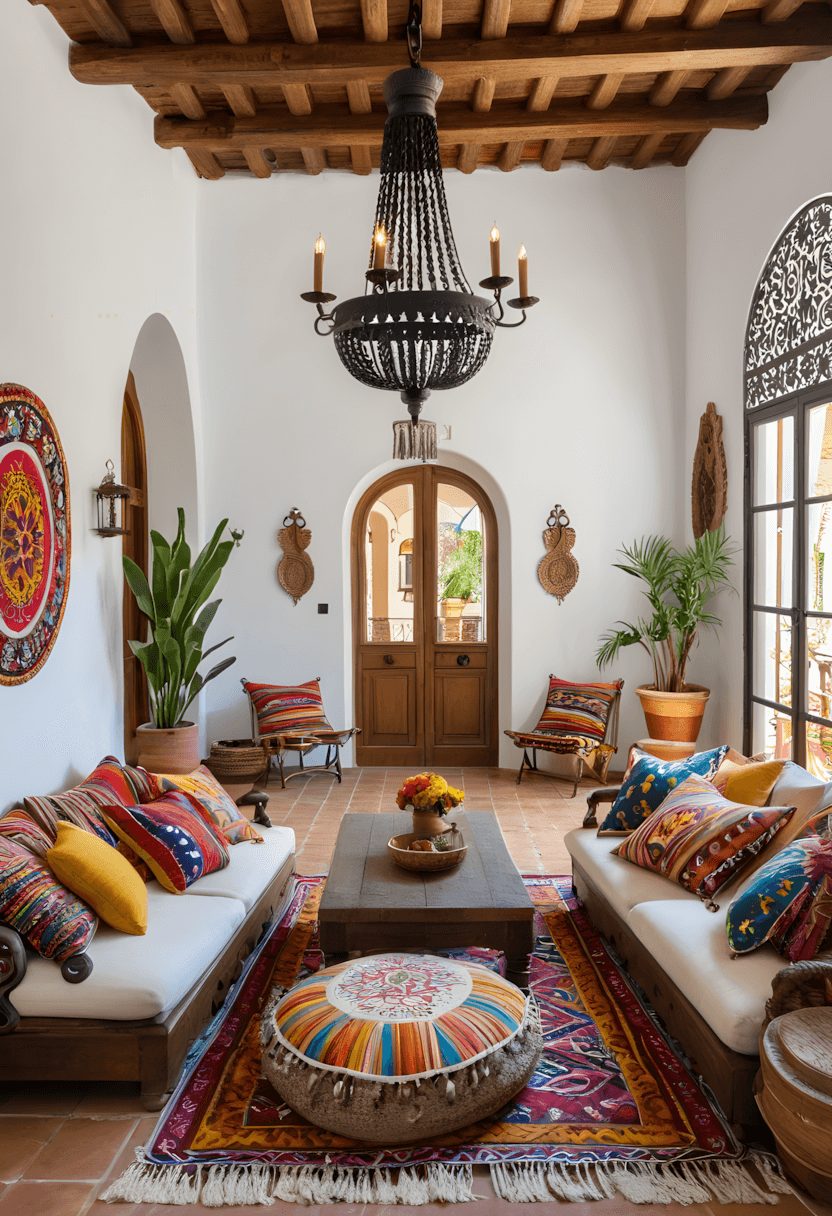
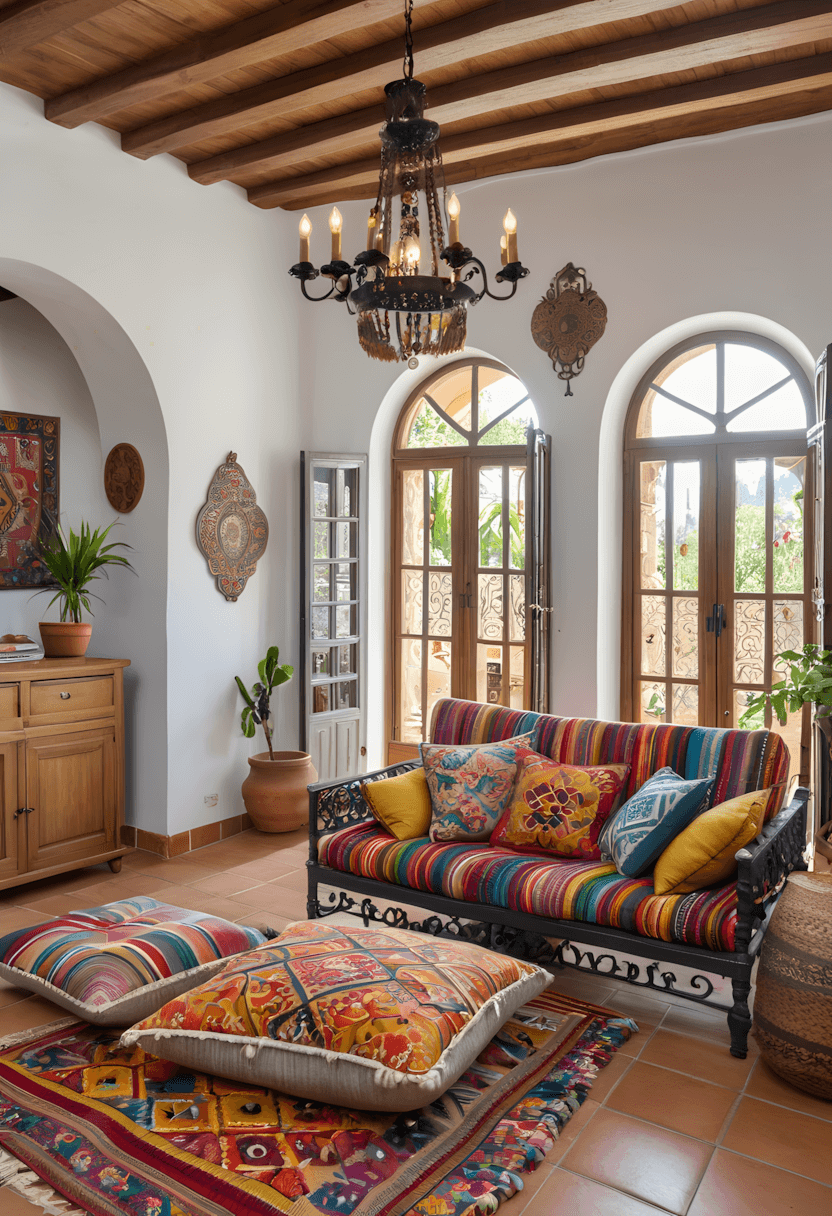
This eclectic approach often appeals to homeowners wanting relaxed, artistic environments. Colorful textiles and varied furniture typically create casual, welcoming spaces with international flair.
Design freedom: This approach often allows for personal creativity while maintaining Spanish design foundations.
Comfort focus: Varied seating options and soft textiles often create environments that encourage relaxation and social interaction.
16. Garden-Integrated Design
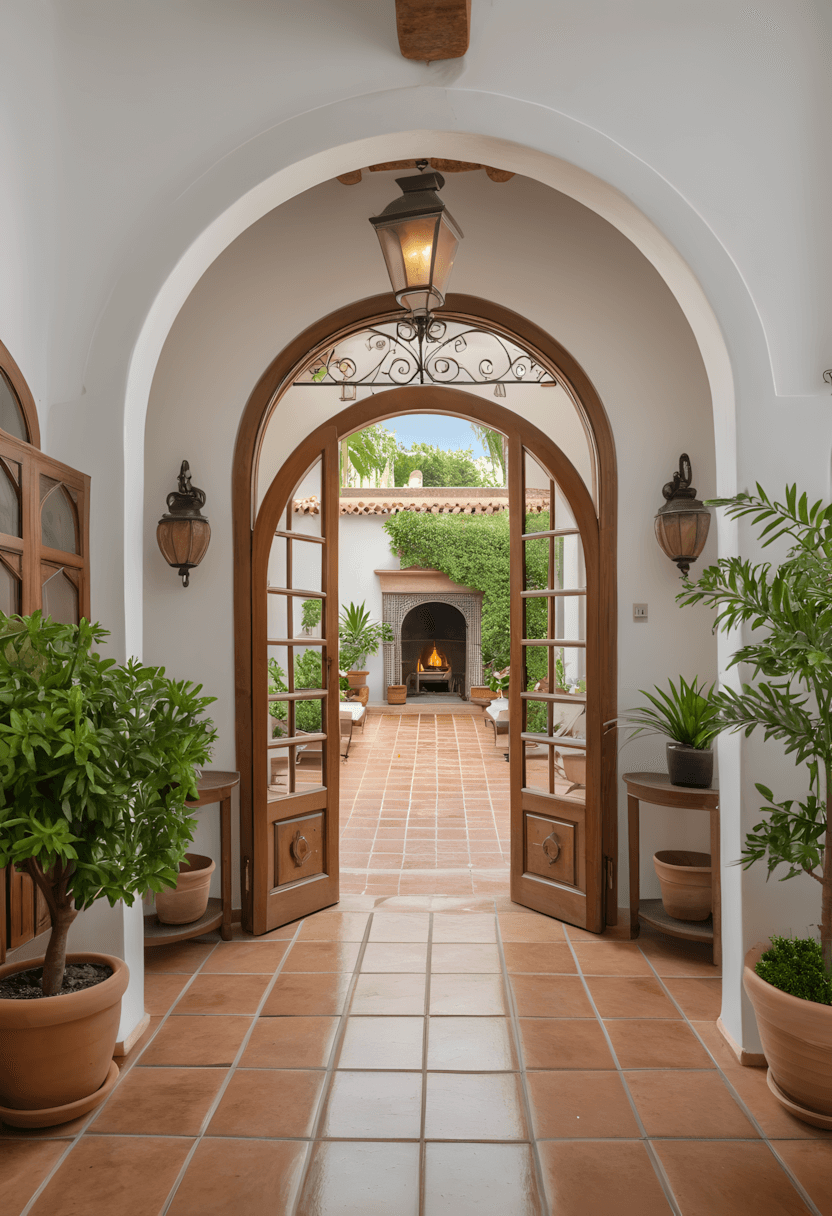

This nature-focused approach often works well for homeowners with access to gardens or courtyards. Incorporating plants and natural views typically creates expansive, refreshing environments.
Design principle: Consistent indoor-outdoor materials often help spaces feel naturally connected rather than artificially separated.
Practical consideration: Proper ventilation and moisture control often become important when integrating indoor and outdoor environments.
17. Coastal Spanish Lightness
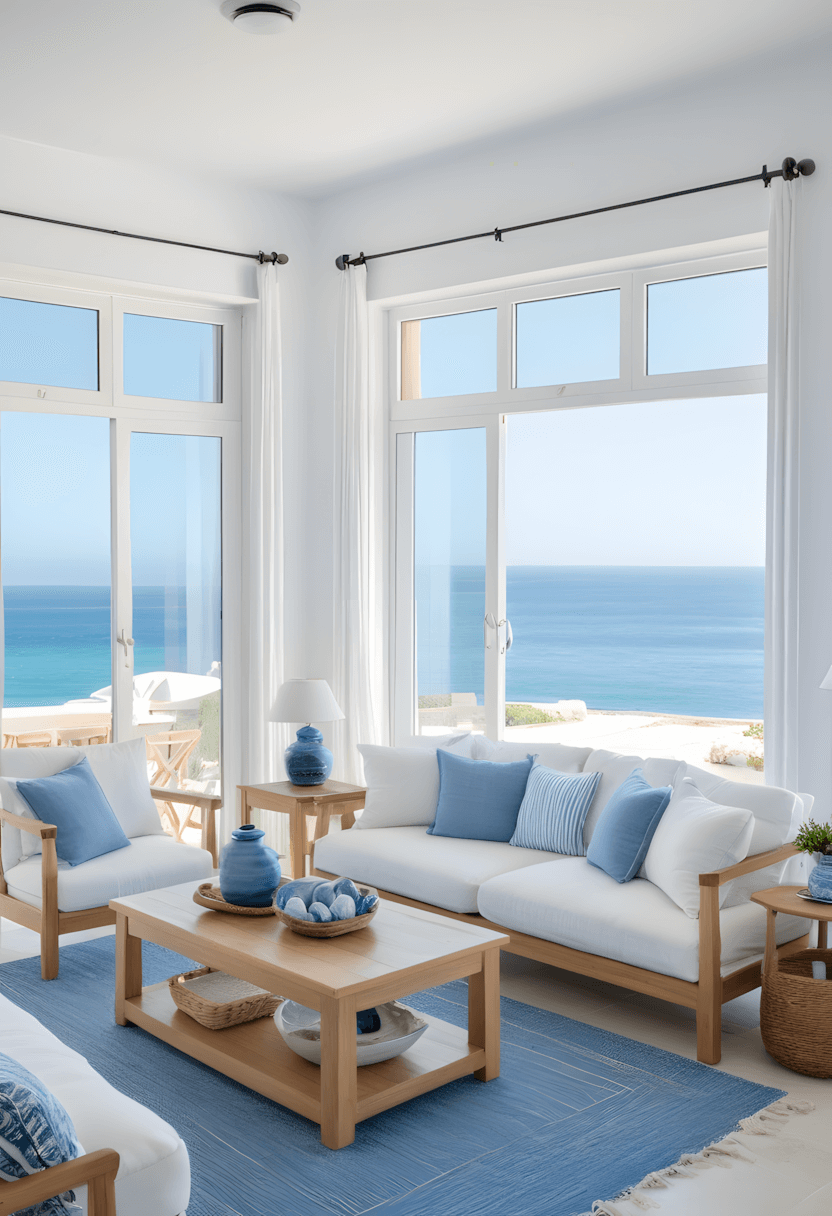
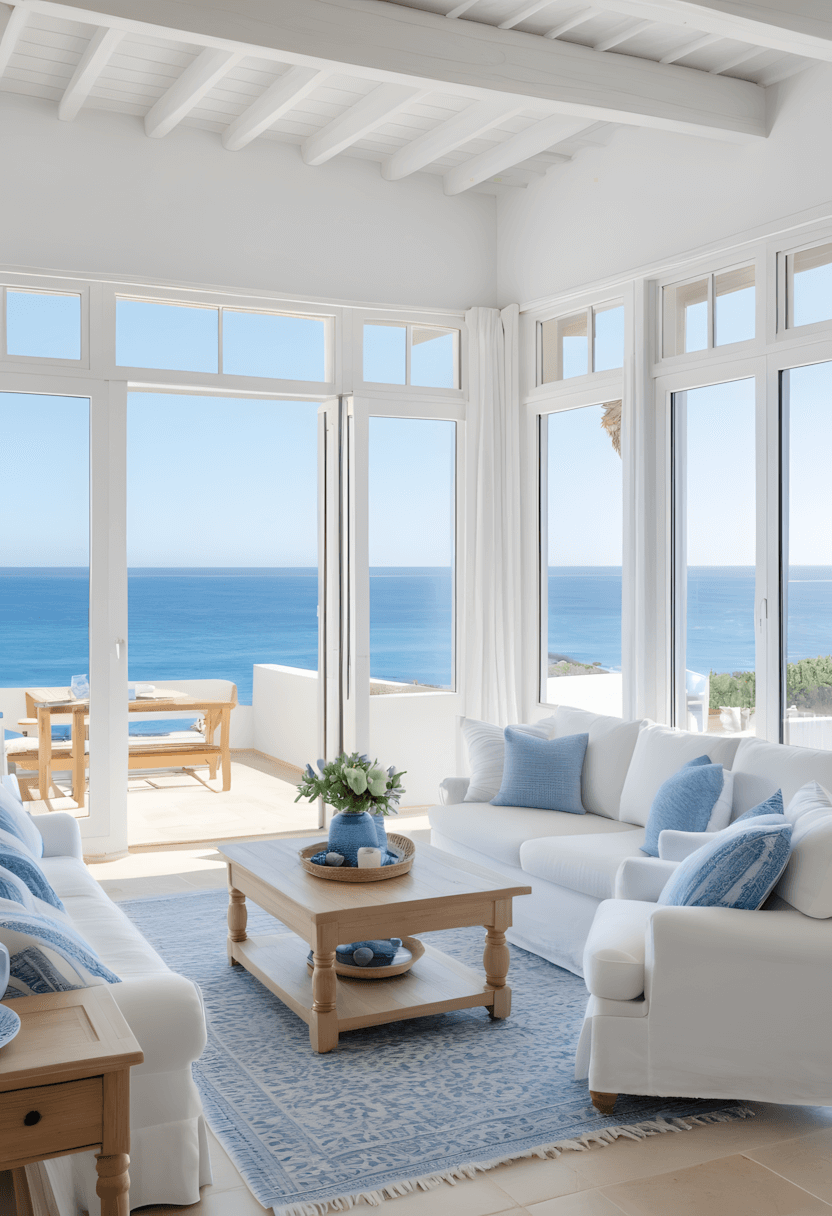
This airy approach often appeals to homeowners wanting relaxed, beach-inspired environments. Light colors and natural materials typically create effortless sophistication with Spanish character.
Design benefit: This approach often works well in smaller spaces by maximizing light and creating feelings of openness.
Material selection: Natural wood and light textiles often provide coastal character while maintaining Spanish design principles.
18. Artisanal Craft Focus
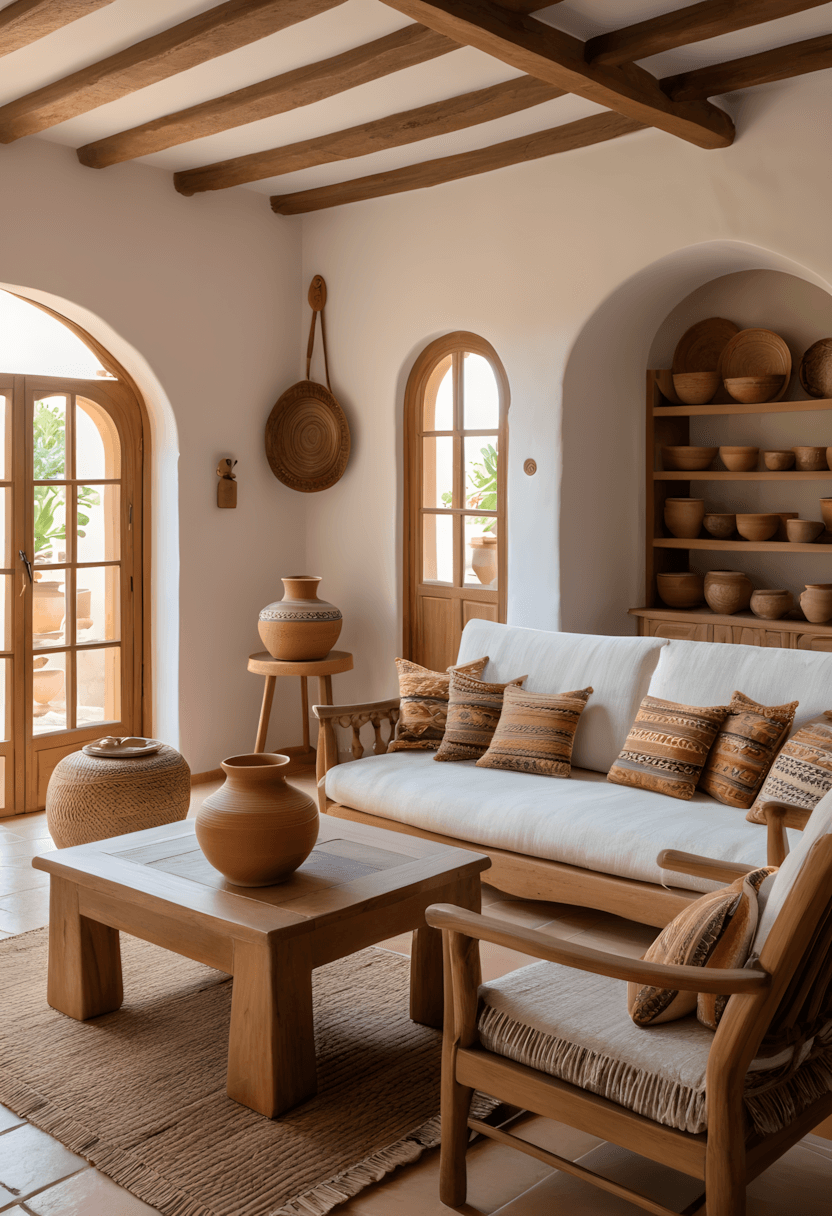
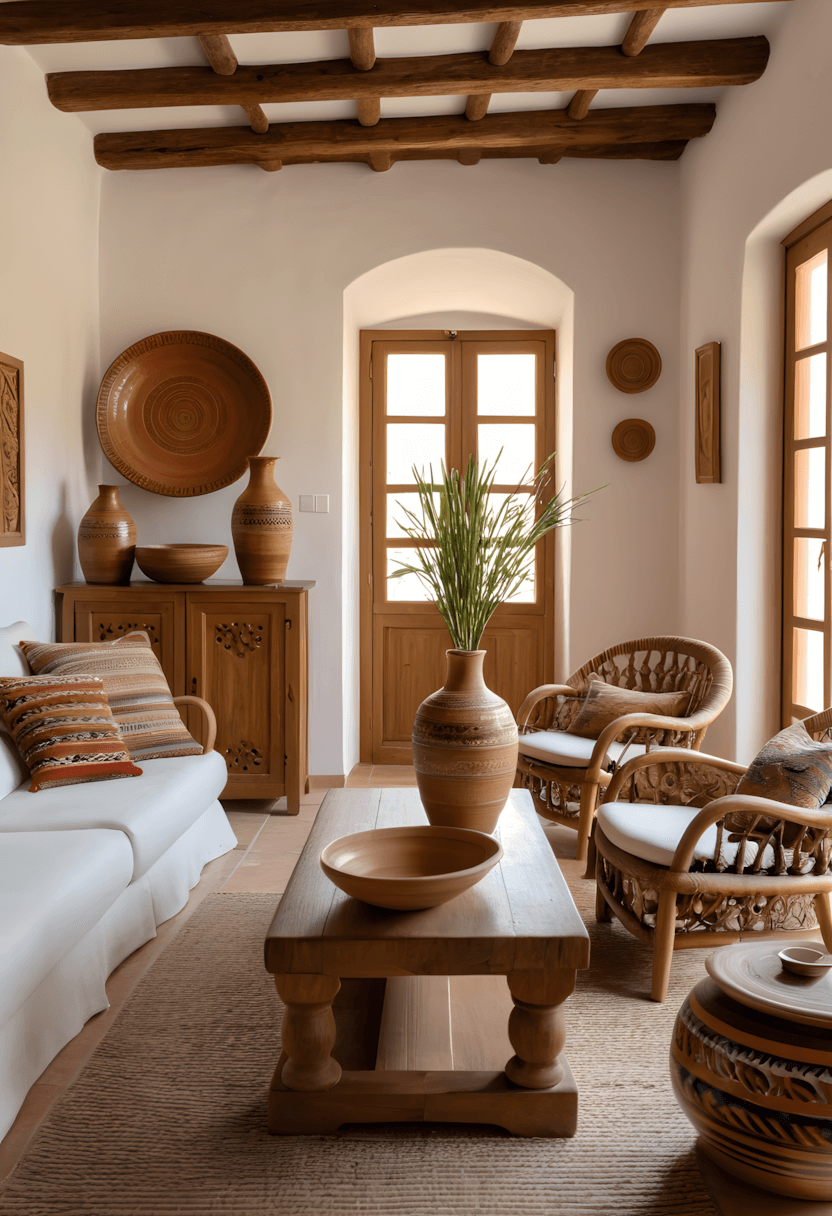
This handmade approach often works well for homeowners appreciating traditional craftsmanship and unique details. Pottery, textiles, and carved wood typically add authentic character that mass production cannot replicate.
Design value: Handcrafted elements often provide lasting beauty and cultural authenticity that improve spaces over time.
Investment consideration: Quality artisanal pieces often represent good long-term value while supporting traditional craft communities.
19. Spanish Colonial Grandeur
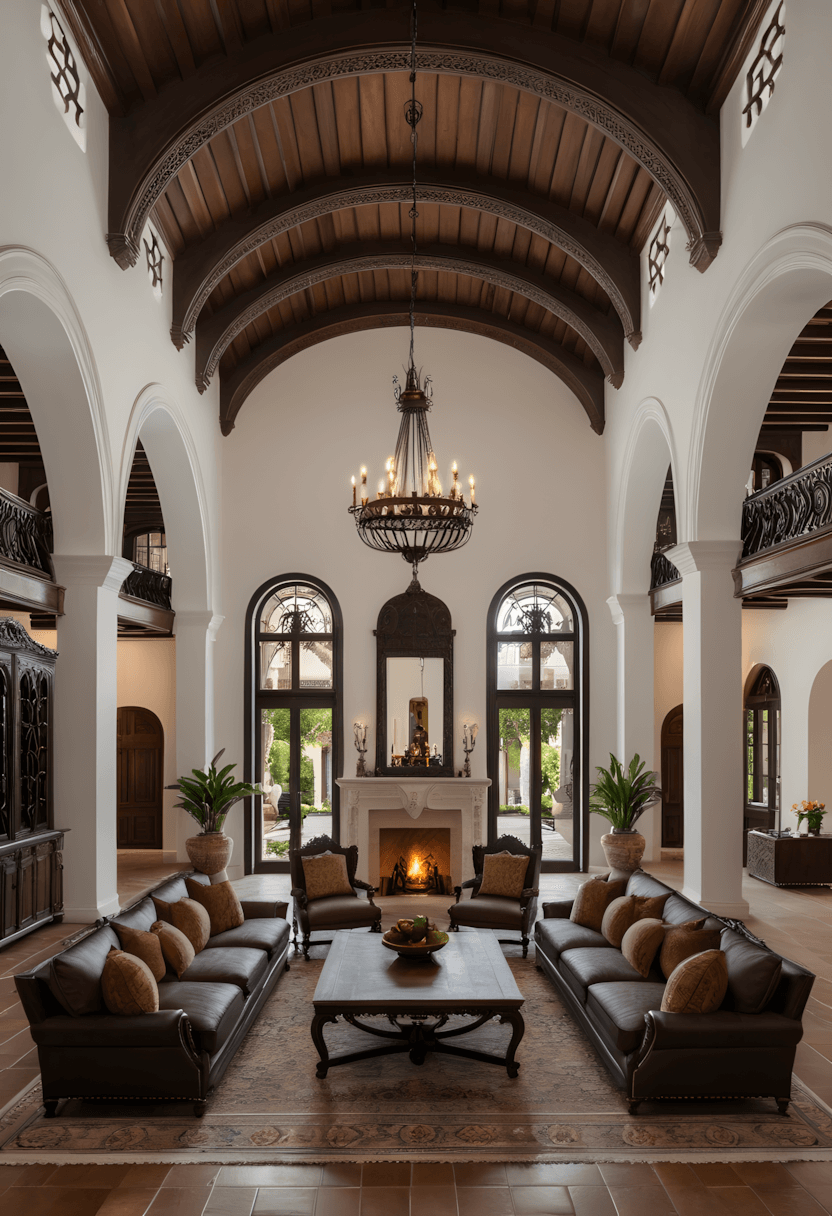
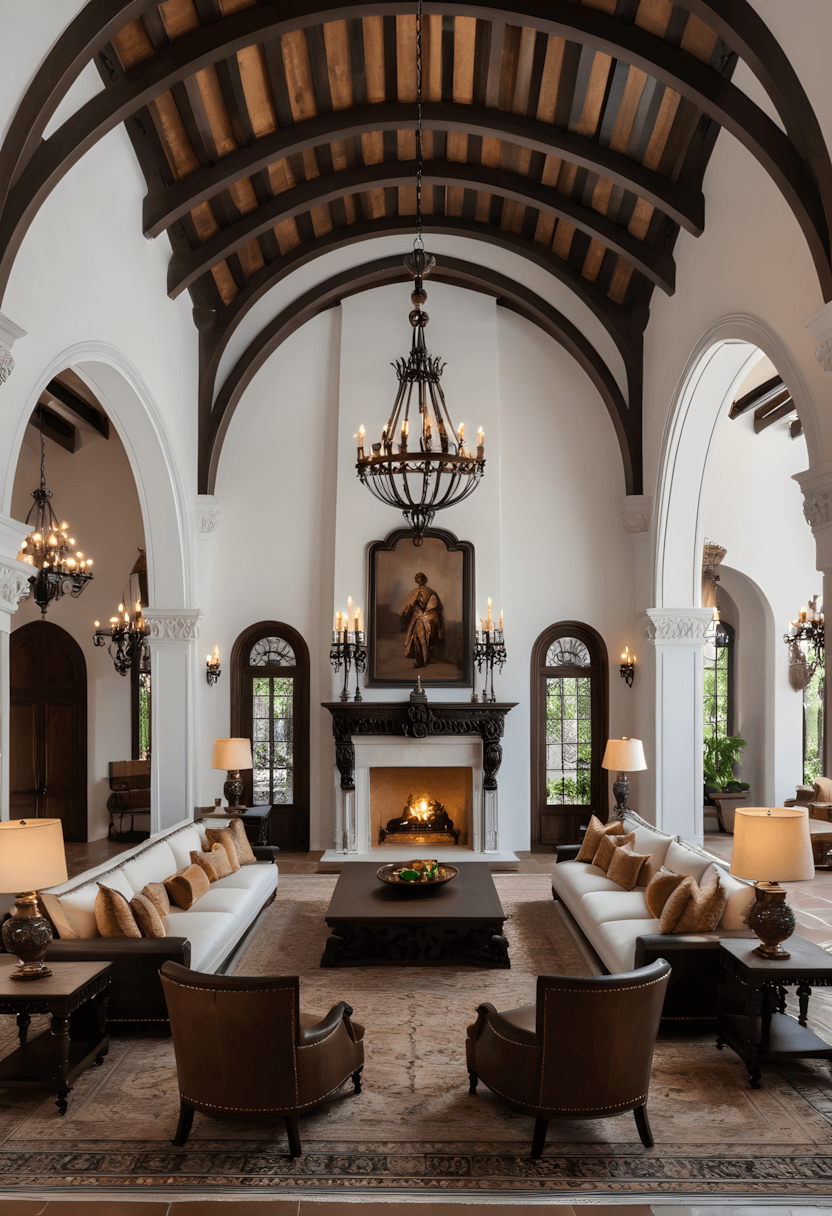
This formal approach often appeals to homeowners wanting impressive, historically rich environments. Ornate details and substantial furniture typically create spaces that feel both elegant and culturally significant.
Design scale: Large-scale elements often work best in spacious rooms where they can be properly appreciated without overwhelming the space.
Historical accuracy: Authentic period details often provide more convincing results than modern interpretations of historical styles.
20. Tropical Spanish Blend
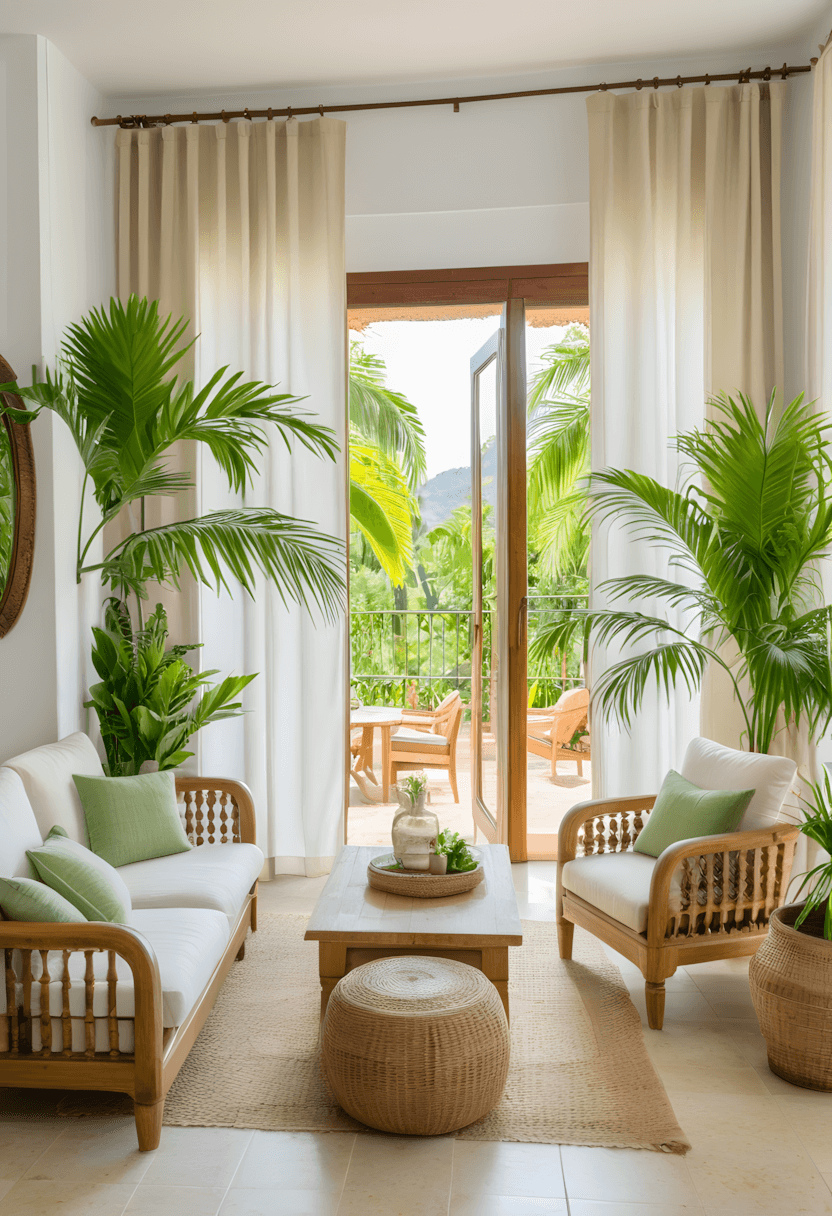

This unique approach often works well for homeowners in tropical climates wanting Spanish character with regional adaptation. Incorporating tropical plants typically creates refreshing environments while maintaining Spanish design foundations.
Climate consideration: Natural ventilation and tropical plant integration often create comfortable environments in warm, humid climates.
Design flexibility: This fusion approach often allows for creative interpretation while respecting both Spanish and tropical design principles.
21. Grand Architectural Emphasis
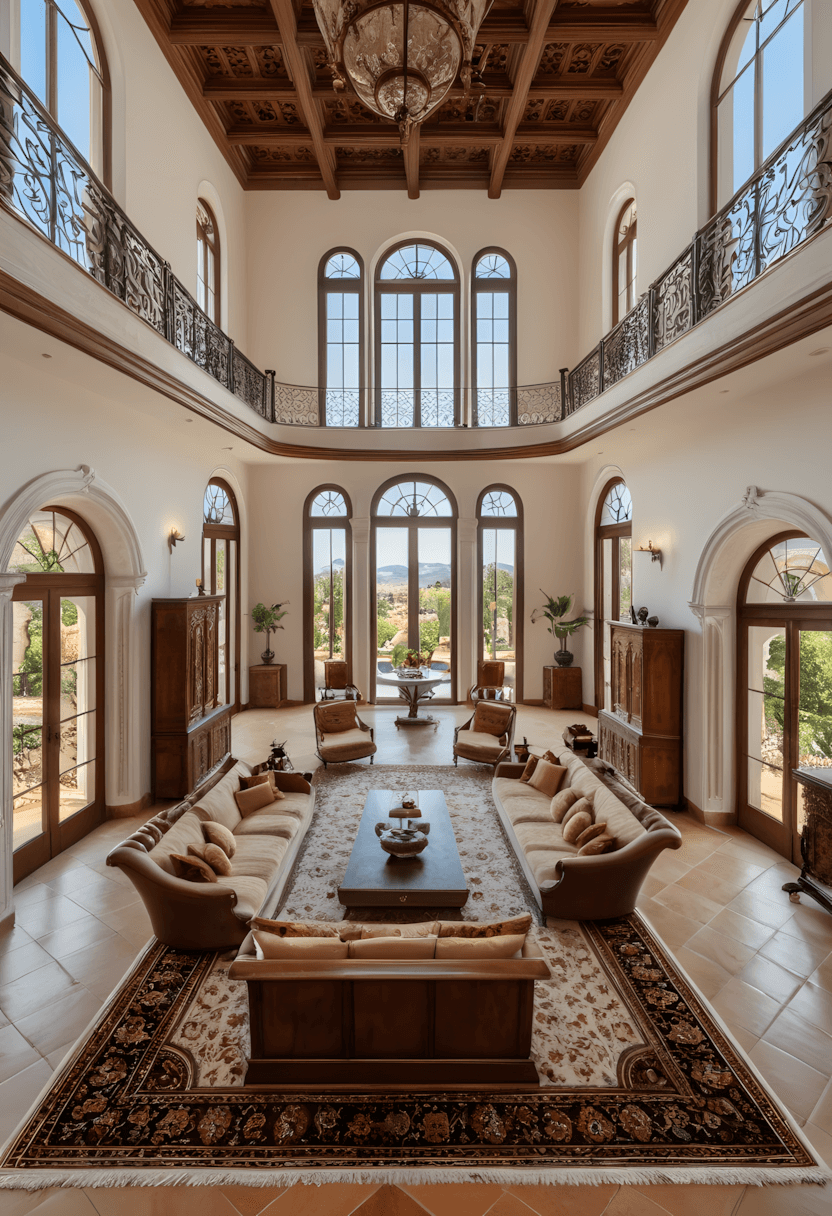
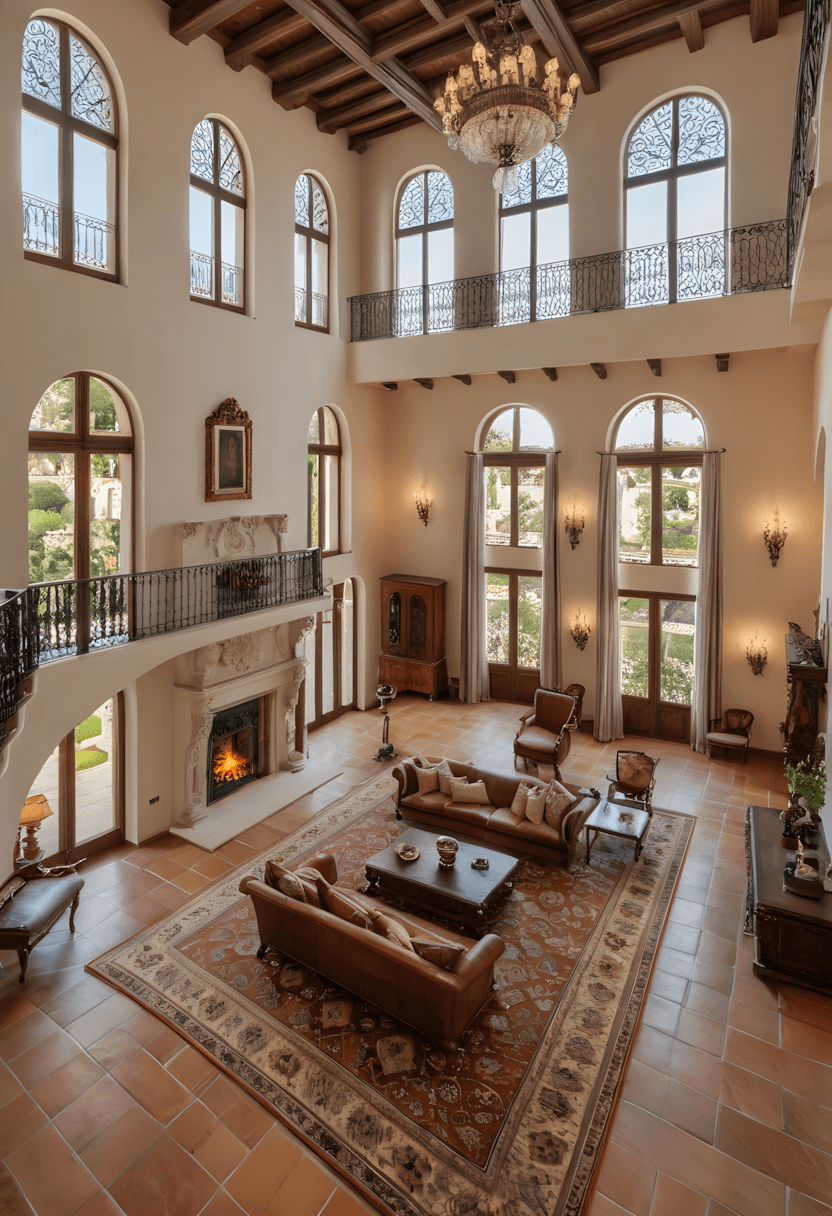
This impressive approach often appeals to homeowners with substantial spaces wanting dramatic architectural impact. Sweeping elements and impressive scale typically create memorable, sophisticated environments.
Design requirement: Large-scale approaches often require adequate space and proper proportions to achieve intended impressive effects.
Investment consideration: Architectural modifications often represent significant investments that provide lasting value and character.
22. Casual Mediterranean Comfort
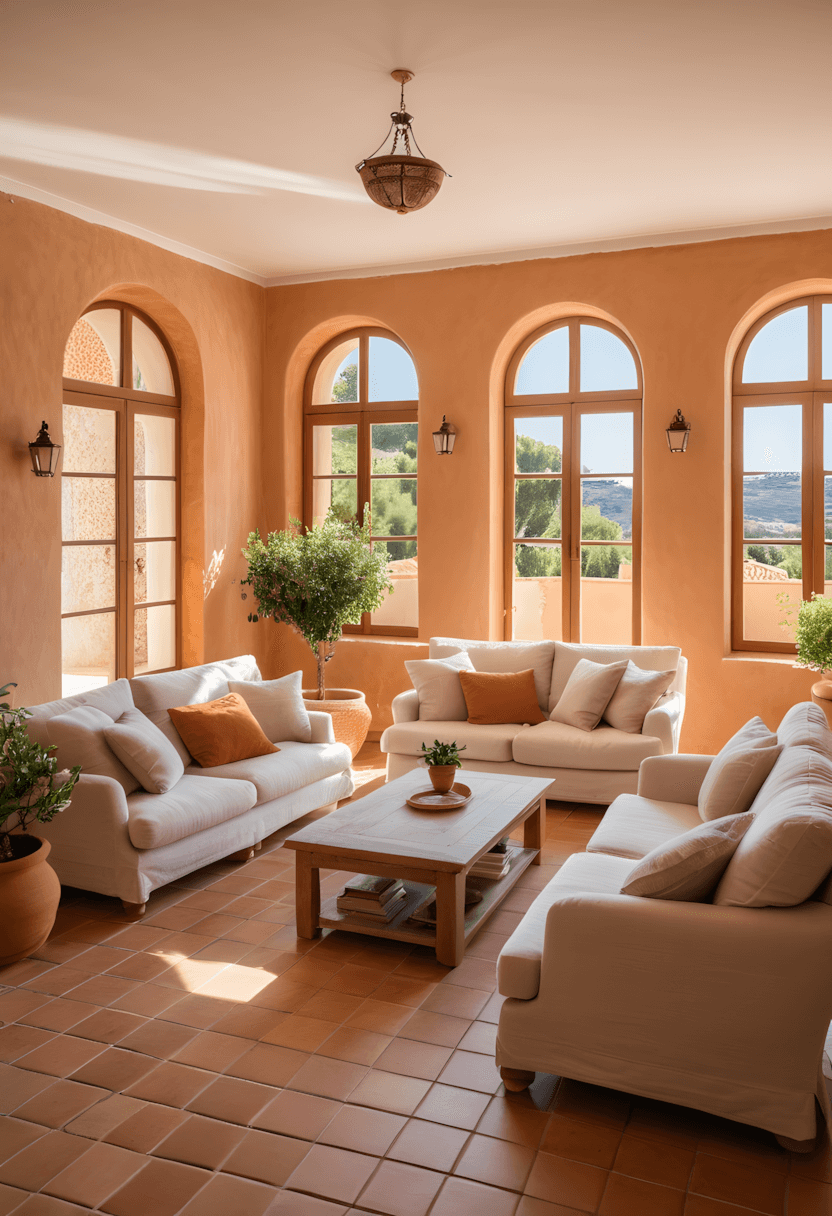
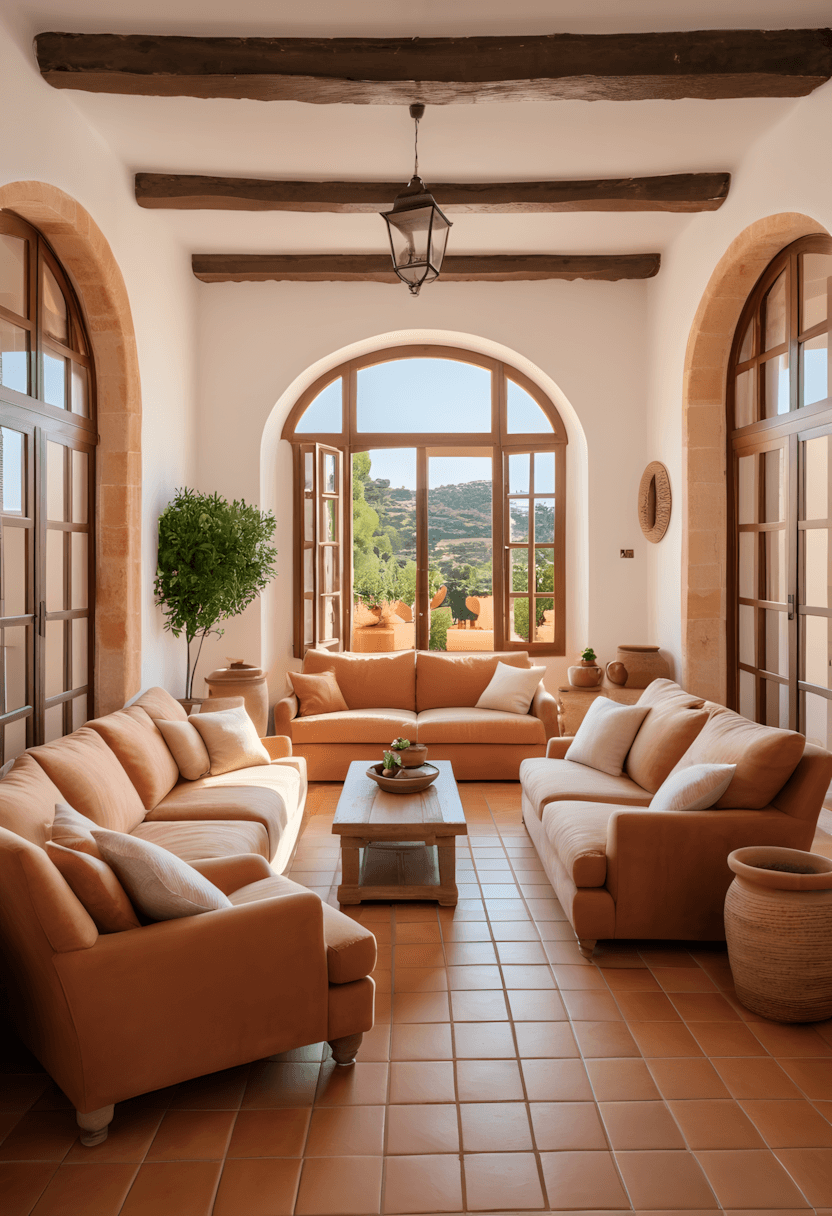
This relaxed approach often works well for families wanting comfortable, practical environments with Spanish character. Comfortable seating and durable materials typically create welcoming spaces for daily use.
Family consideration: This approach often prioritizes comfort and practicality while maintaining design sophistication and cultural character.
Material durability: Choosing materials that age gracefully often ensures spaces remain attractive despite regular family use.
23. Serene Spanish Retreat
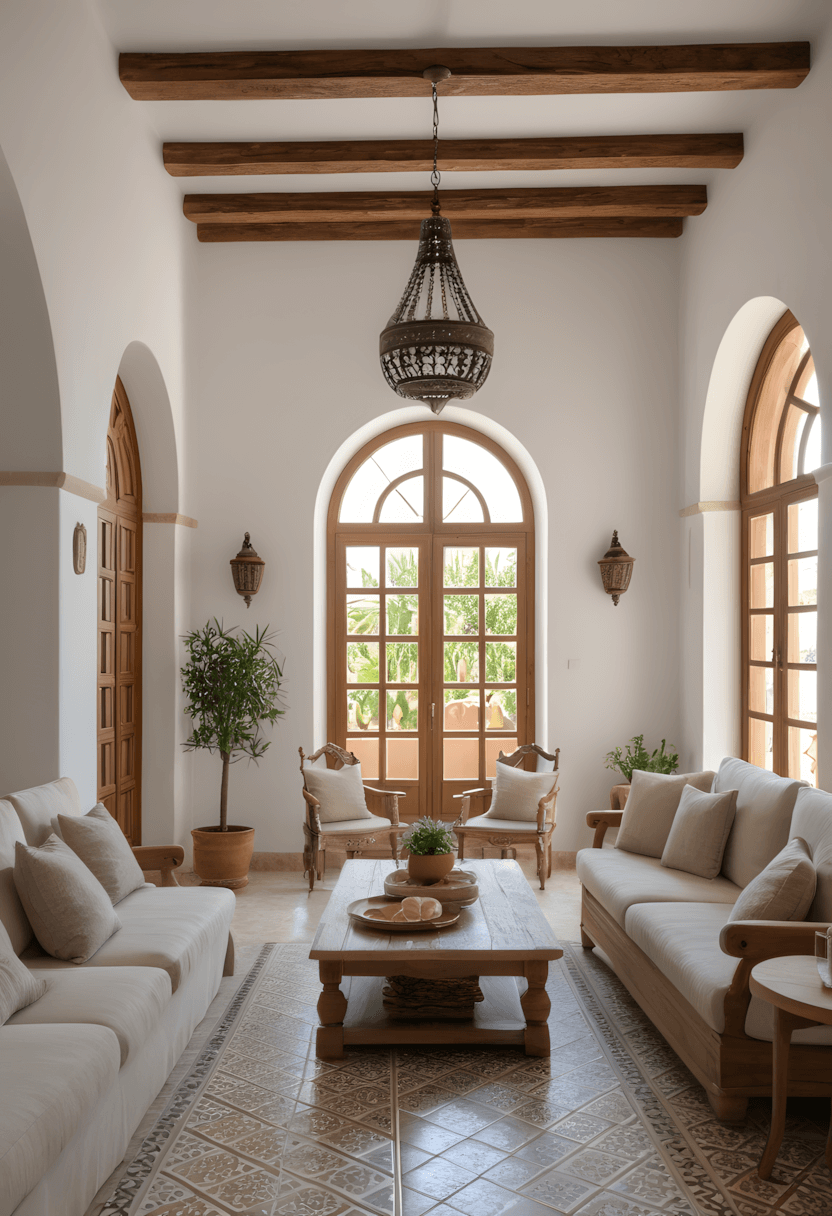
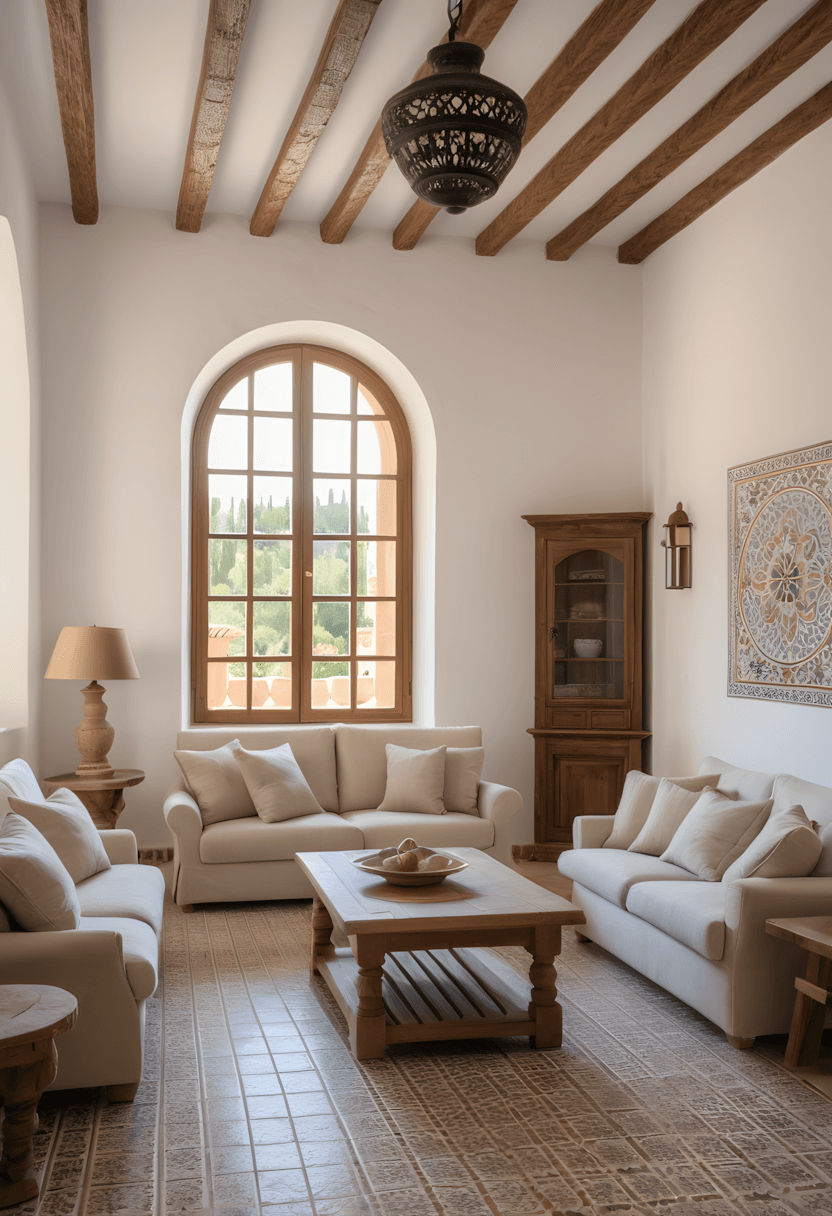
This peaceful approach often appeals to homeowners wanting calm, restorative environments. Neutral colors and handcrafted details typically create tranquil spaces that encourage relaxation.
Design benefit: Peaceful environments often provide necessary retreat from busy daily life while maintaining sophisticated design character.
Material selection: Natural, tactile materials often enhance the serene quality while providing authentic Spanish design elements.
24. Nature-Integrated Traditional
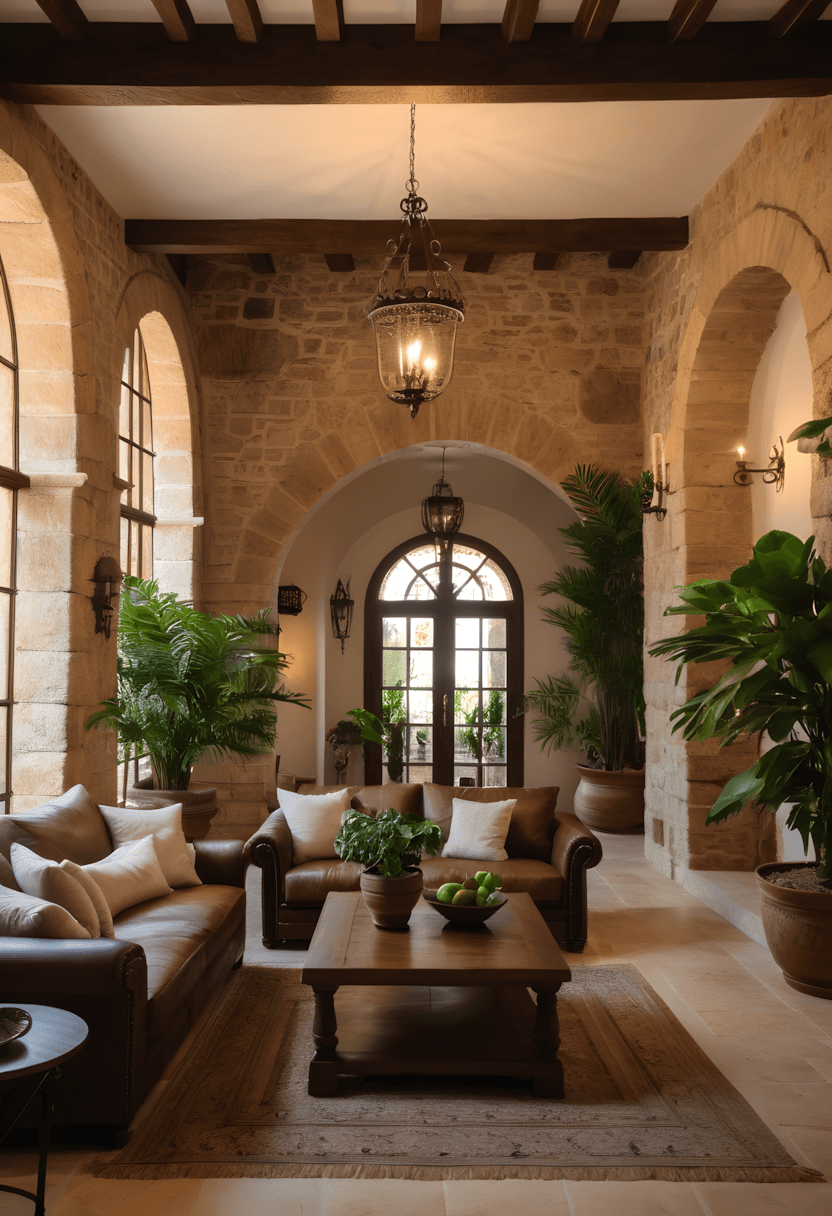
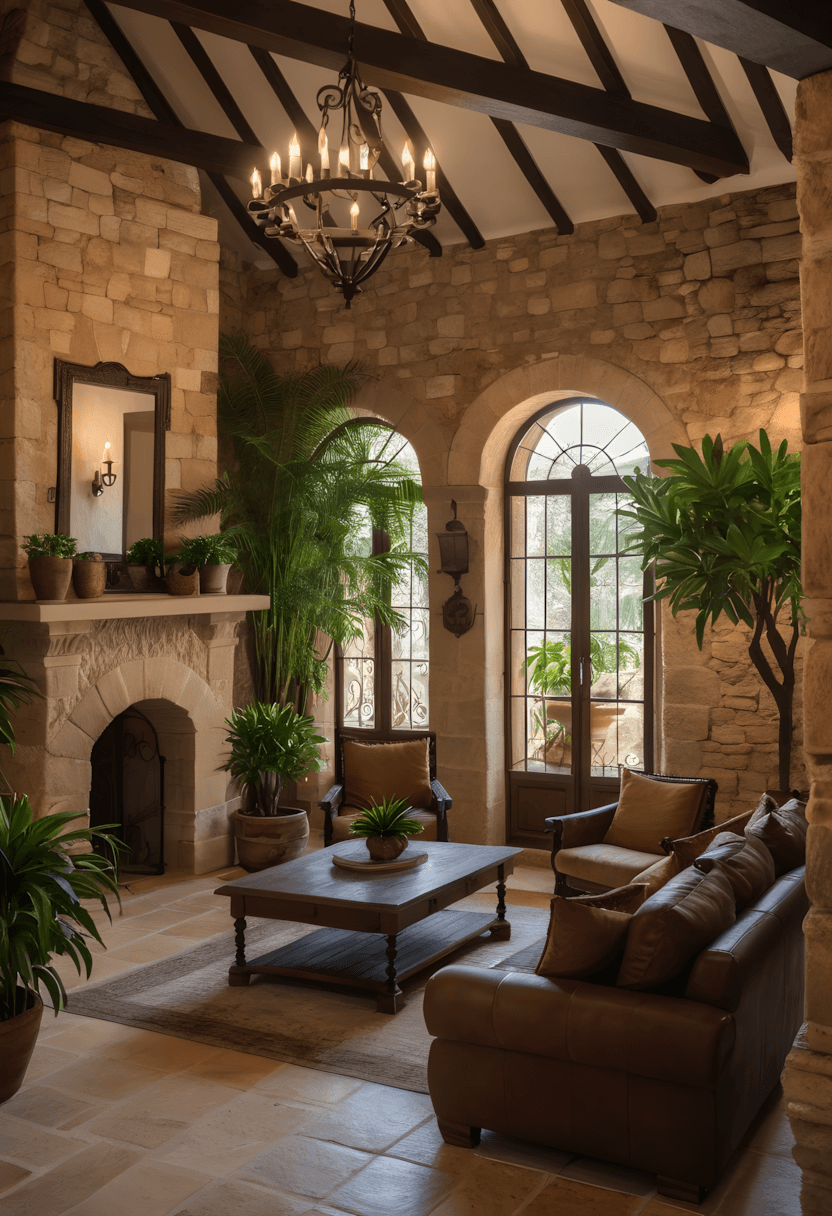
This organic approach often works well for homeowners wanting to connect interior spaces with natural environments. Combining traditional features with living plants typically creates harmonious, refreshing spaces.
Design principle: Successful integration often requires balancing architectural elements with natural features to create unified environments.
Practical consideration: Plant care and moisture control often require planning to maintain healthy, attractive integrated environments.
25. Architectural Showcase
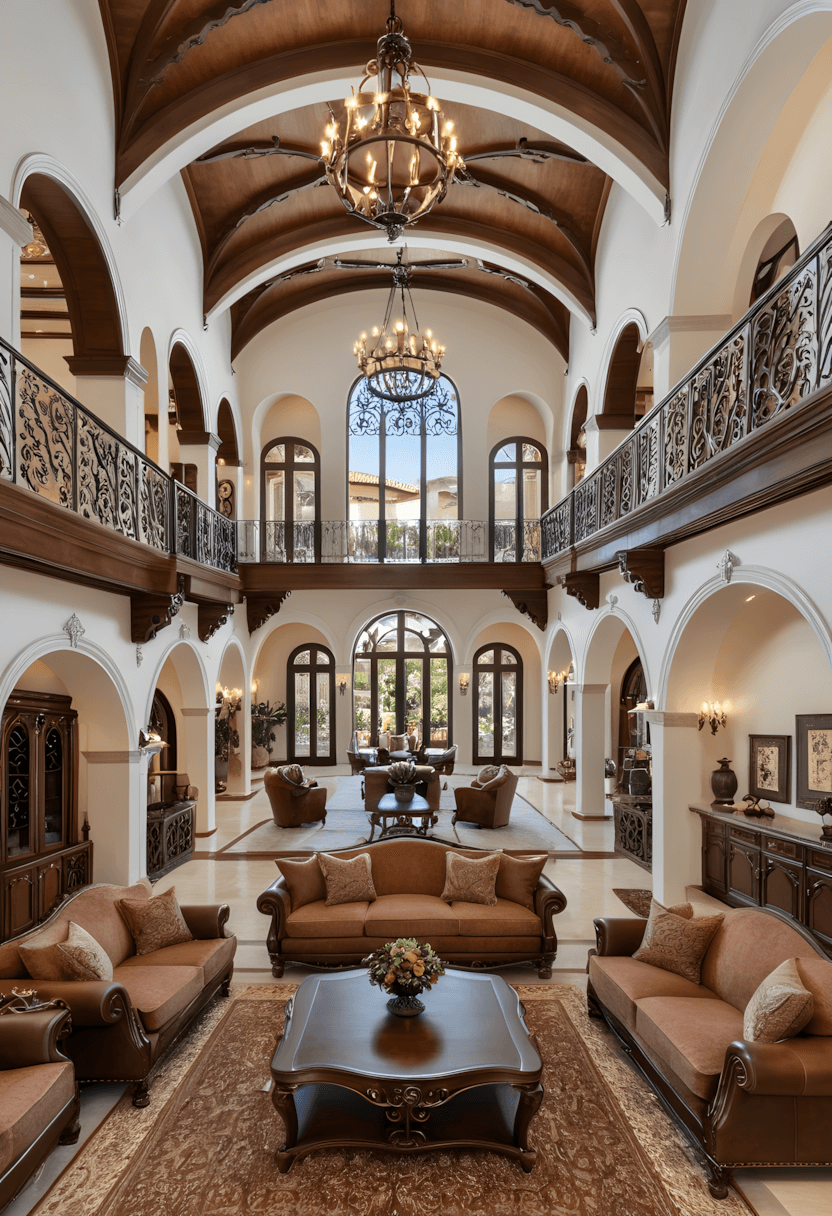
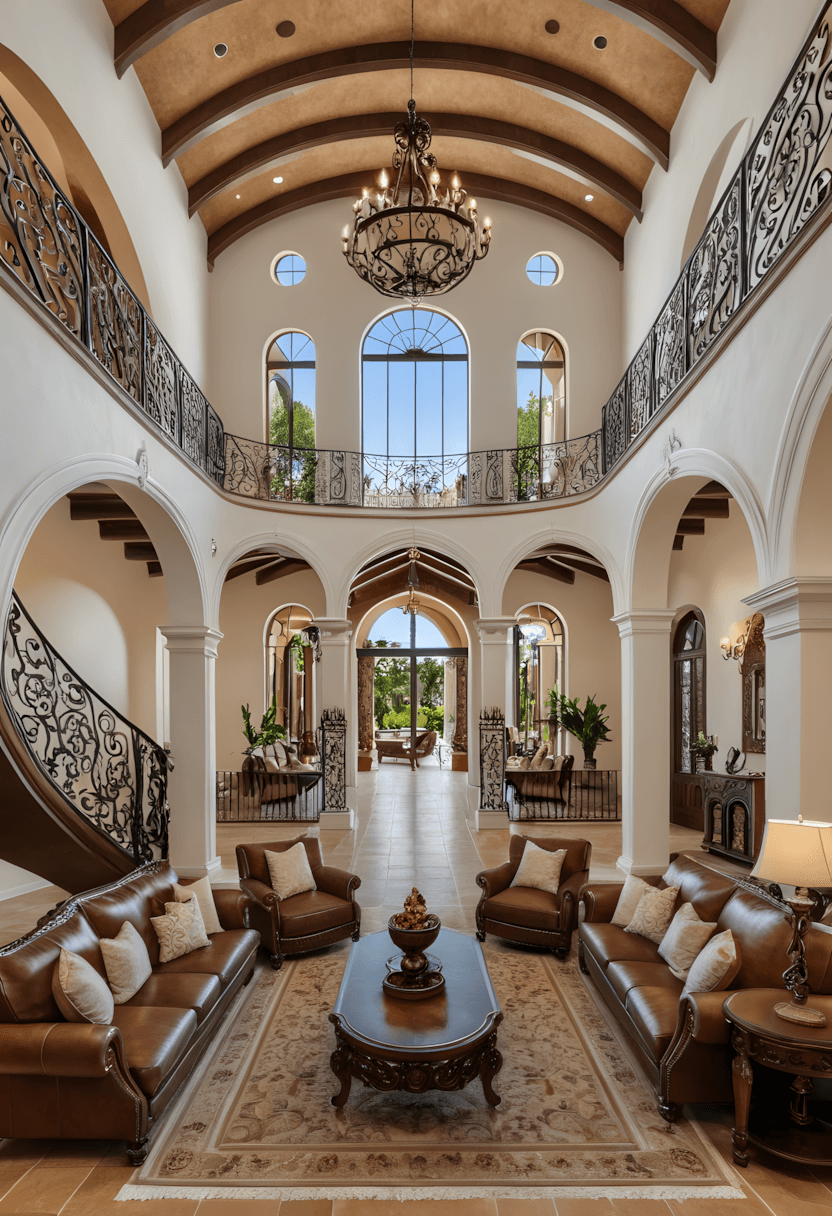
This dramatic approach often appeals to homeowners wanting to highlight impressive architectural features. Soaring ceilings and expansive arches typically create grand, memorable environments.
Design impact: Architectural features often become the primary decorative elements, requiring minimal additional decoration to achieve impressive results.
Scale consideration: Grand architectural elements often require appropriate room proportions and careful furniture selection to maintain balance.
Understanding Spanish Design Principles
Through various projects, I’ve observed that successful Spanish-style living rooms often depend on understanding the cultural and climatic factors that shaped traditional Spanish architecture and design. The emphasis on natural materials, handcrafted details, and indoor-outdoor connections typically reflects practical adaptations to Mediterranean climates and traditional building methods.
Authentic Spanish design often prioritizes durability, comfort, and natural beauty over trends or superficial decoration. This approach typically creates environments that improve with age and use rather than requiring constant updates to remain attractive.
Material Selection and Authenticity
Choosing appropriate materials often becomes crucial for achieving convincing Spanish-style results. Natural materials like terracotta, wrought iron, carved wood, and handmade textiles typically provide authentic character that synthetic alternatives cannot replicate.
Investment in quality materials often provides better long-term results than numerous decorative accessories, as Spanish design traditionally emphasizes the inherent beauty of well-crafted materials rather than applied decoration.
Adapting Spanish Style for Contemporary Living
Modern interpretations of Spanish style often require balancing historical accuracy with contemporary comfort and functionality. Successful adaptations typically maintain the essential character elements while incorporating modern conveniences and lifestyle requirements.
Consider factors such as lighting needs, technology integration, and contemporary furniture requirements when planning Spanish-inspired spaces to ensure they work effectively for current family life while maintaining desired cultural character.
Remember: For any electrical work, structural changes, or built-in installations mentioned in these ideas, always consult with licensed professionals to ensure proper installation and code compliance.

